Gadaladeniya Temple, Lankatilaka Vihara Temple, and Embekka Devalaya Temple, in Kandy, Sri Lanka
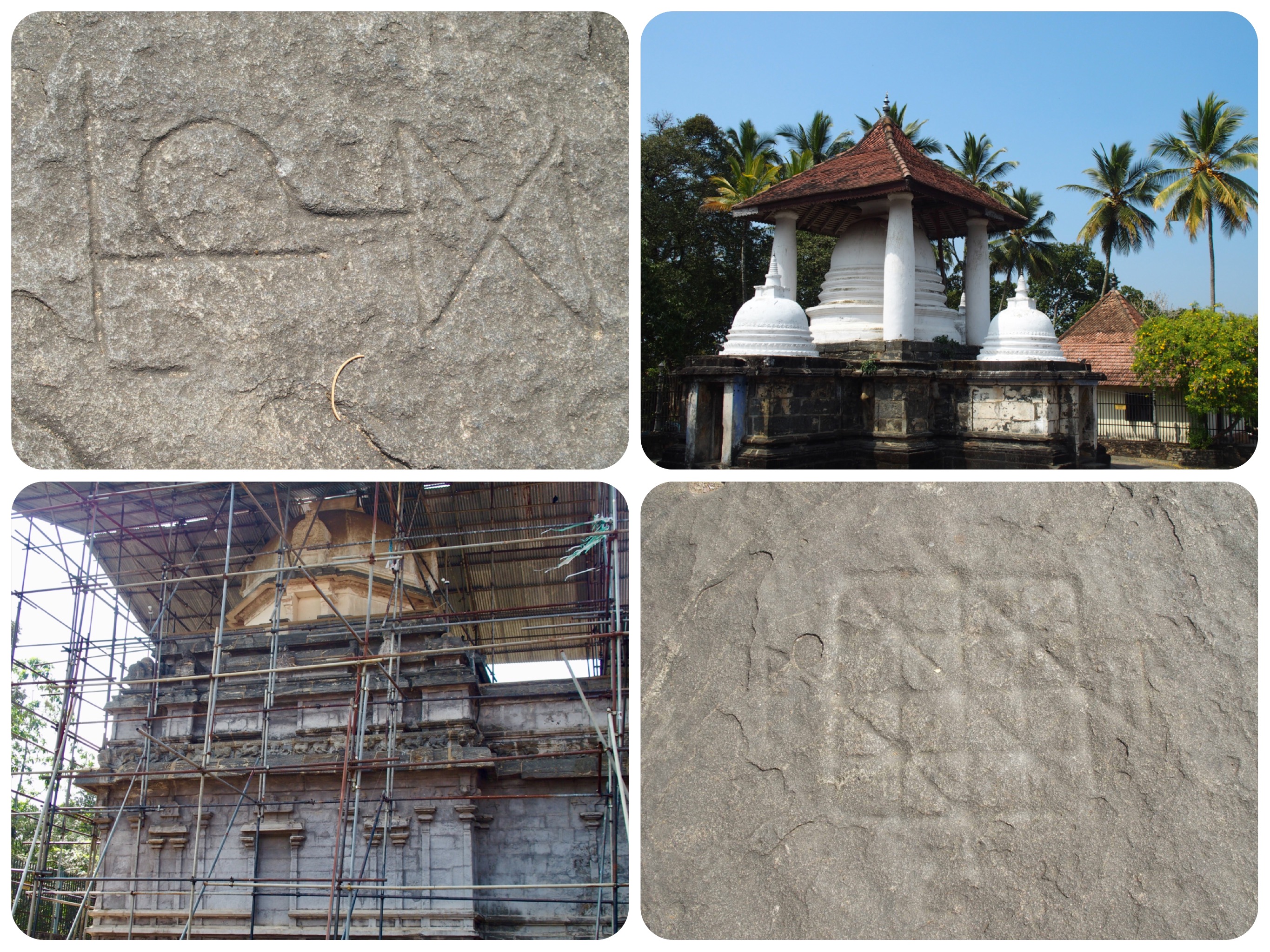
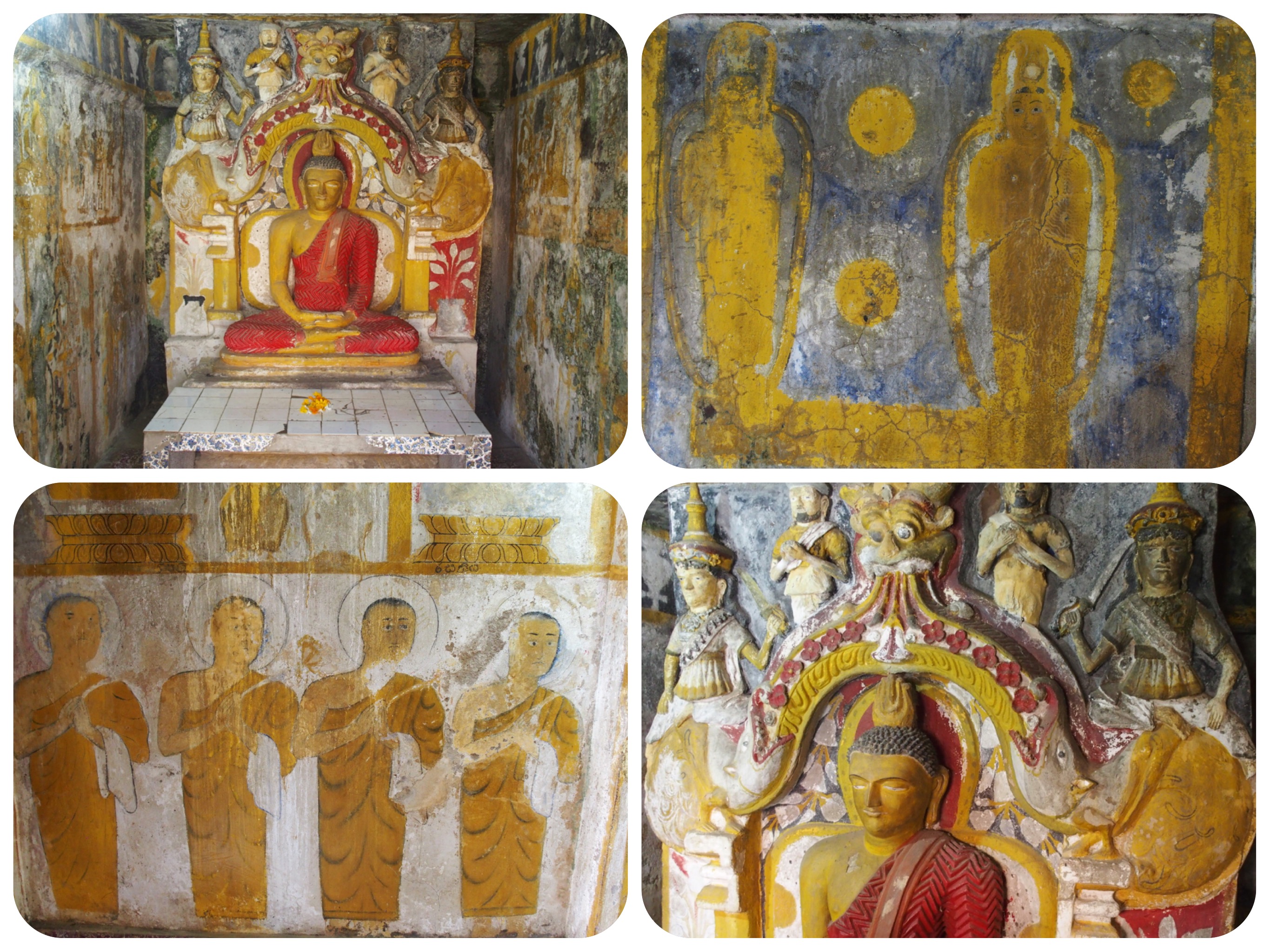
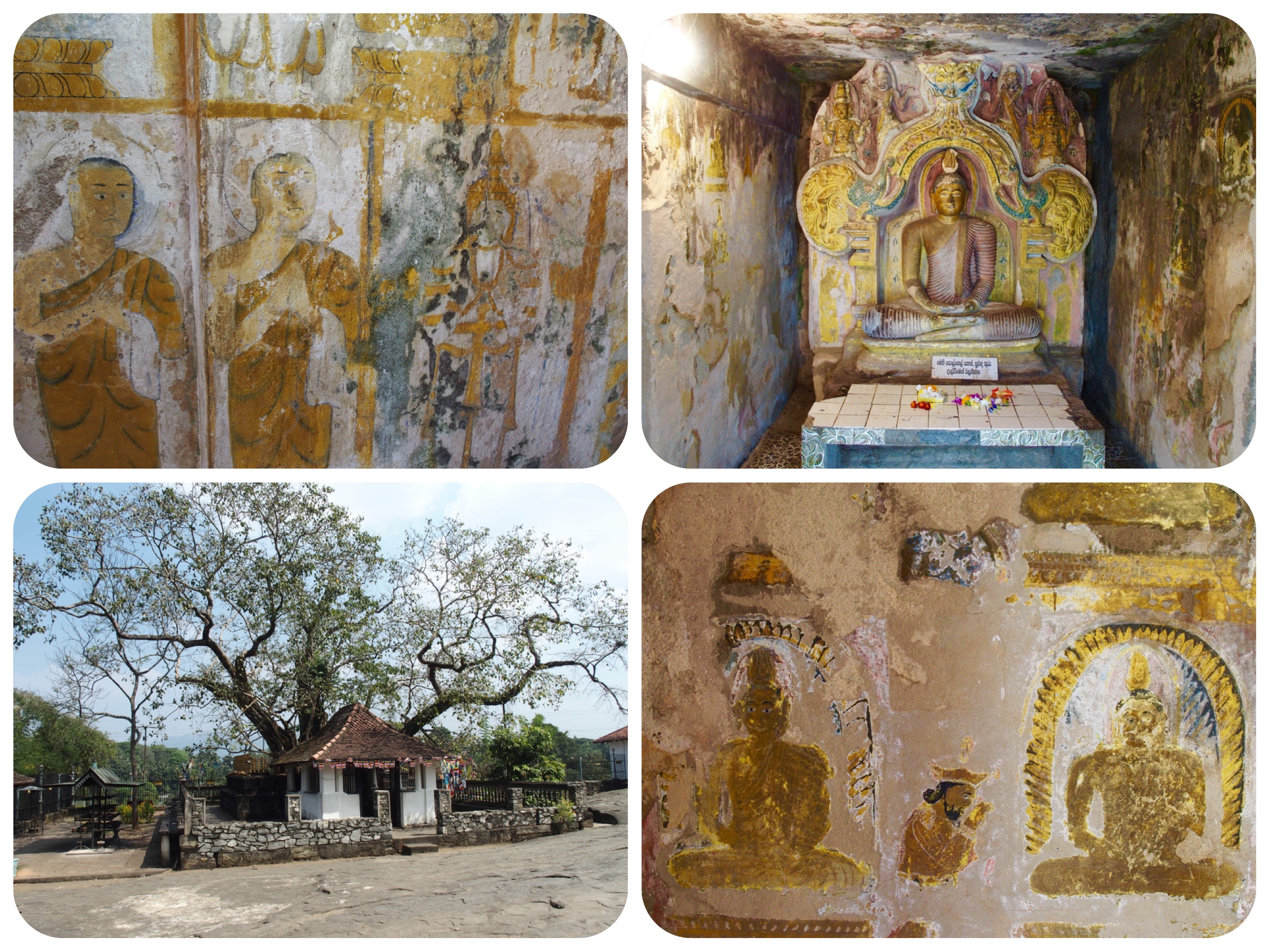
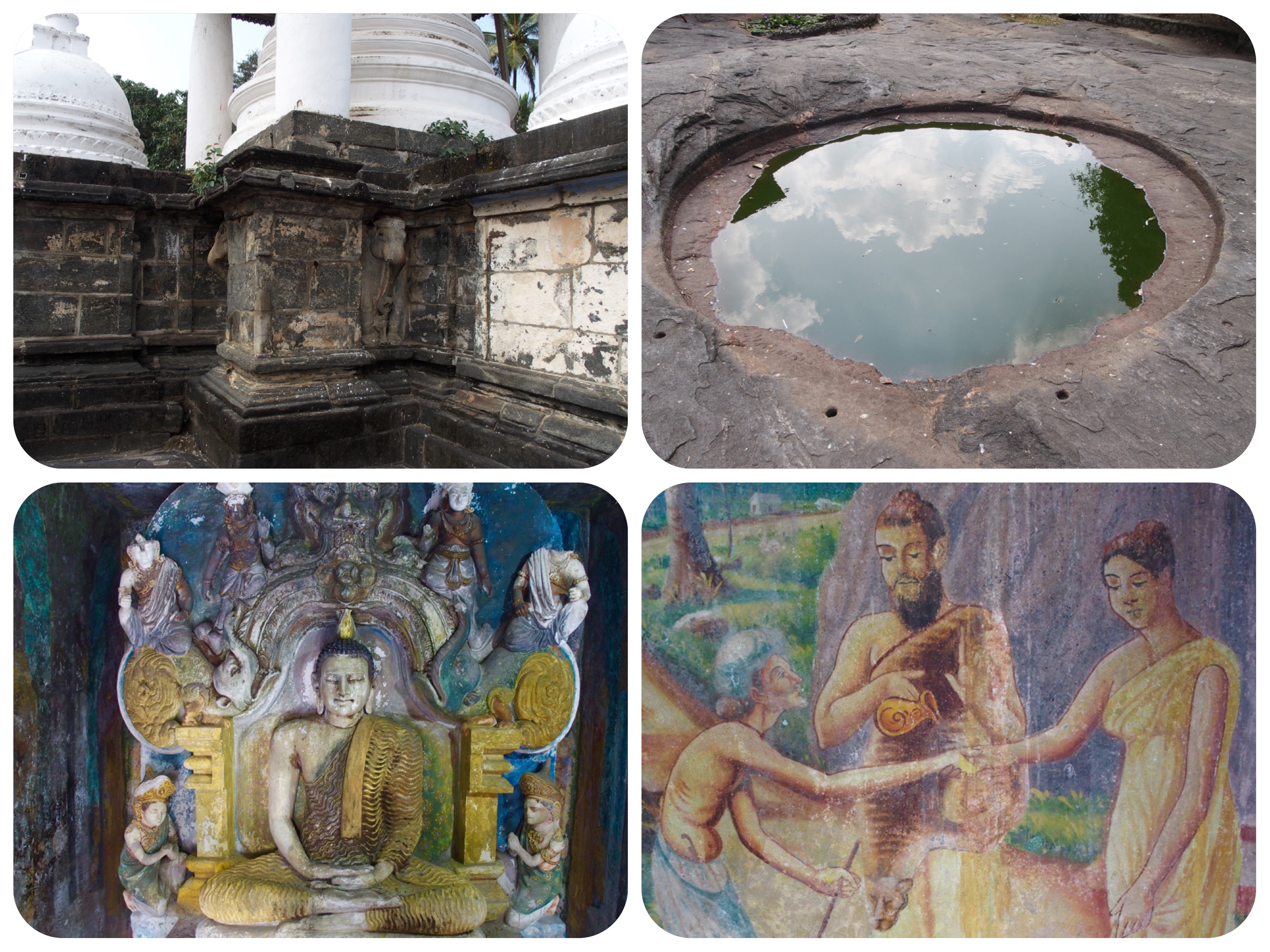
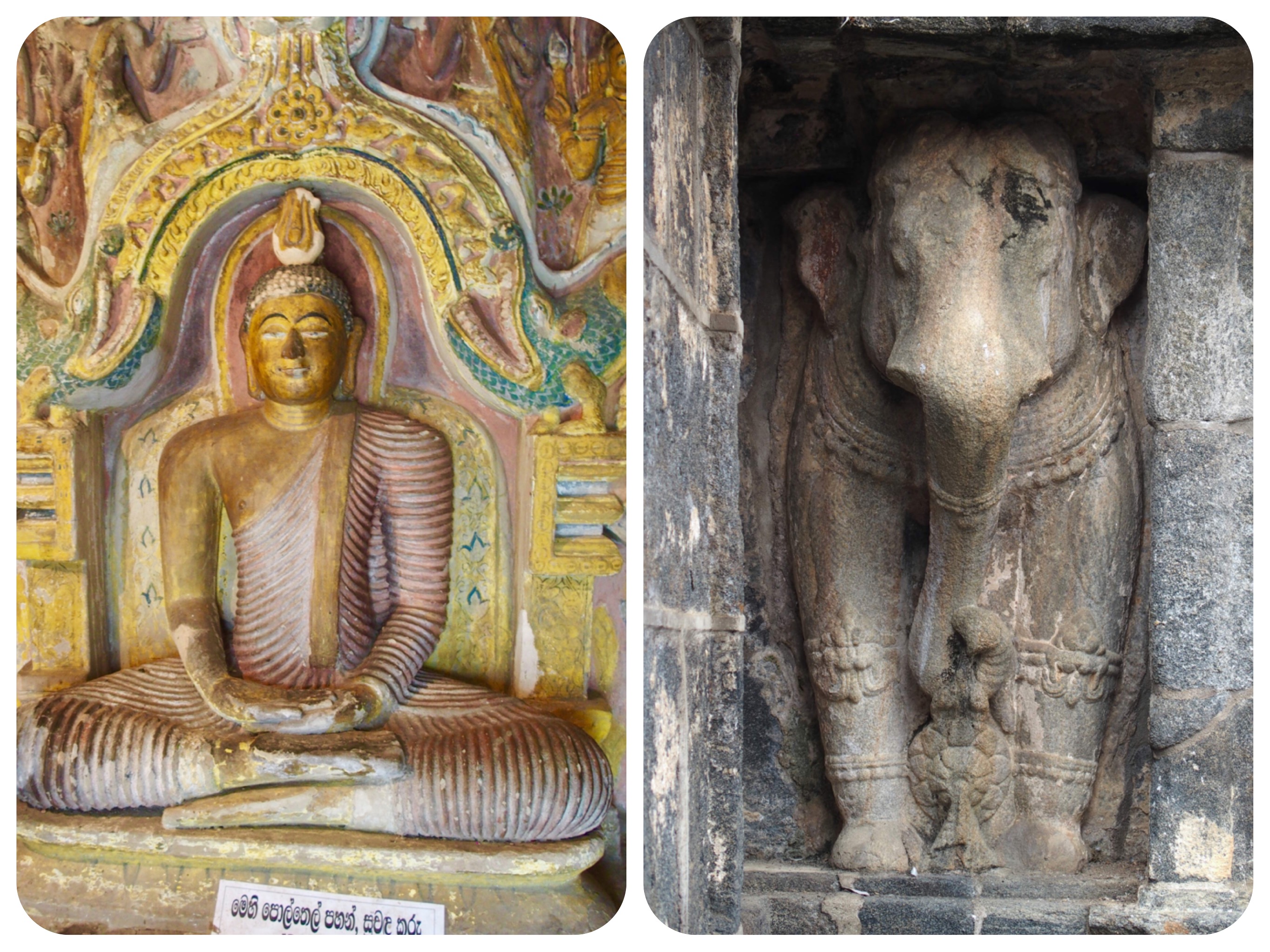
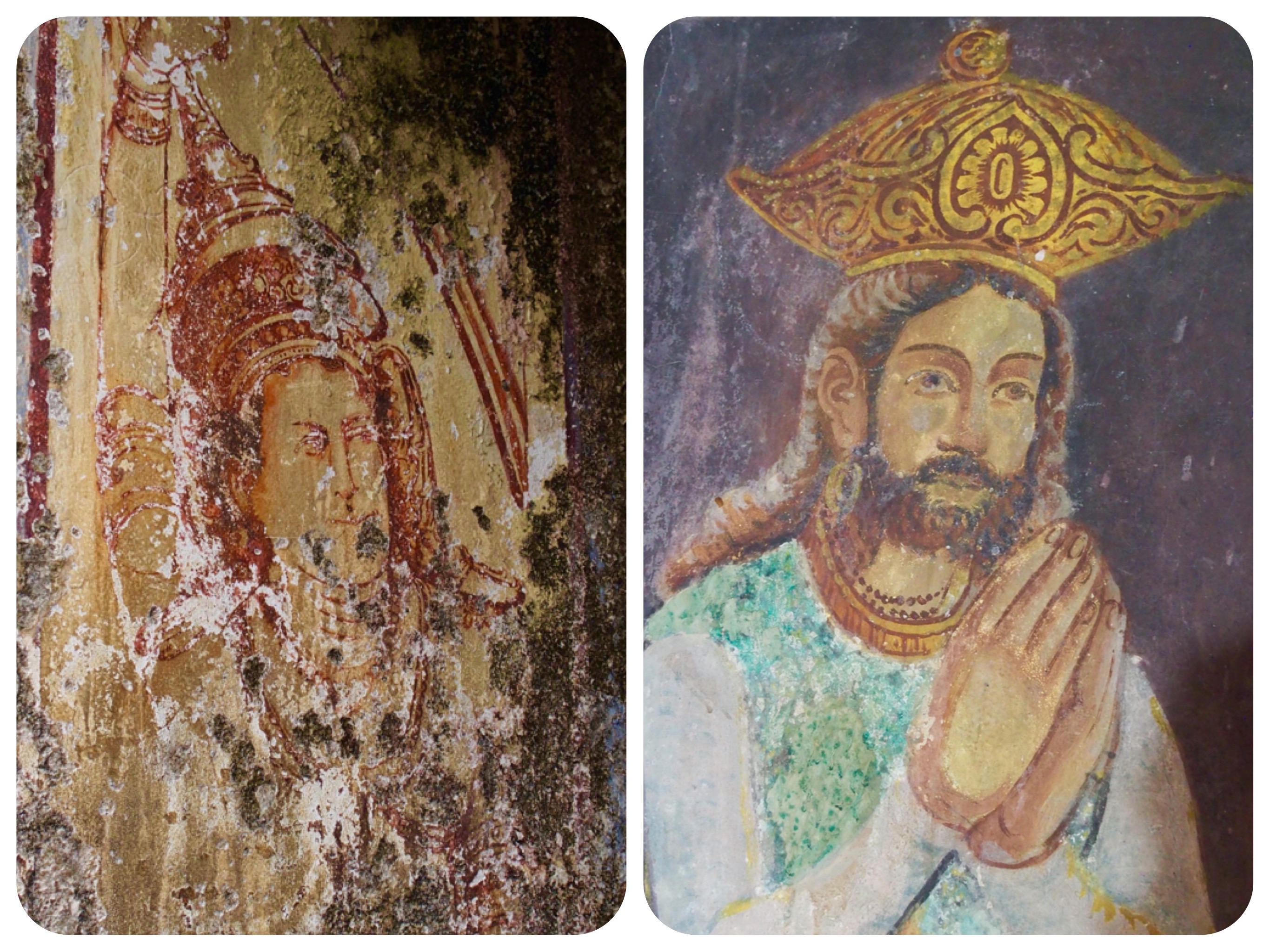
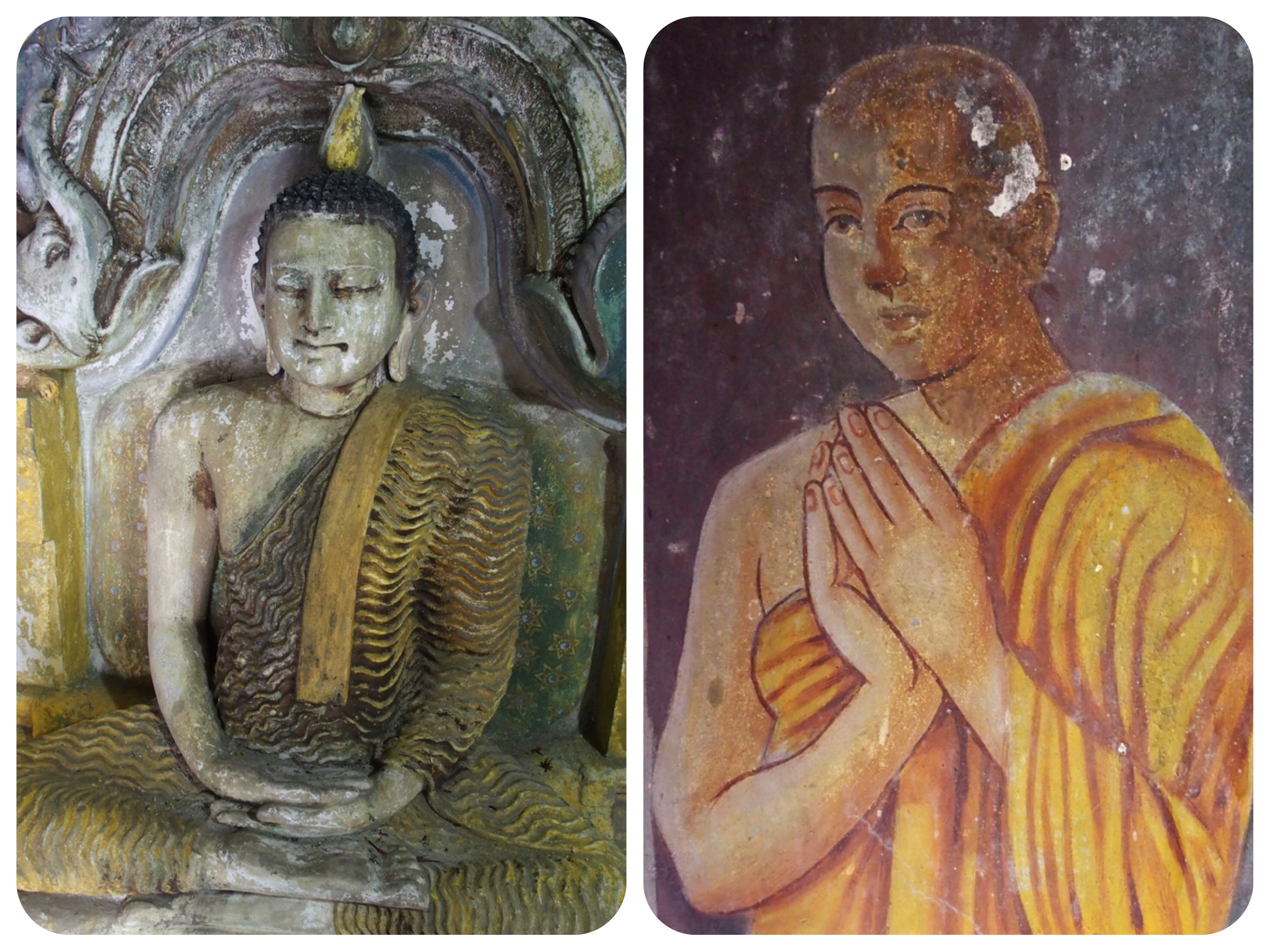
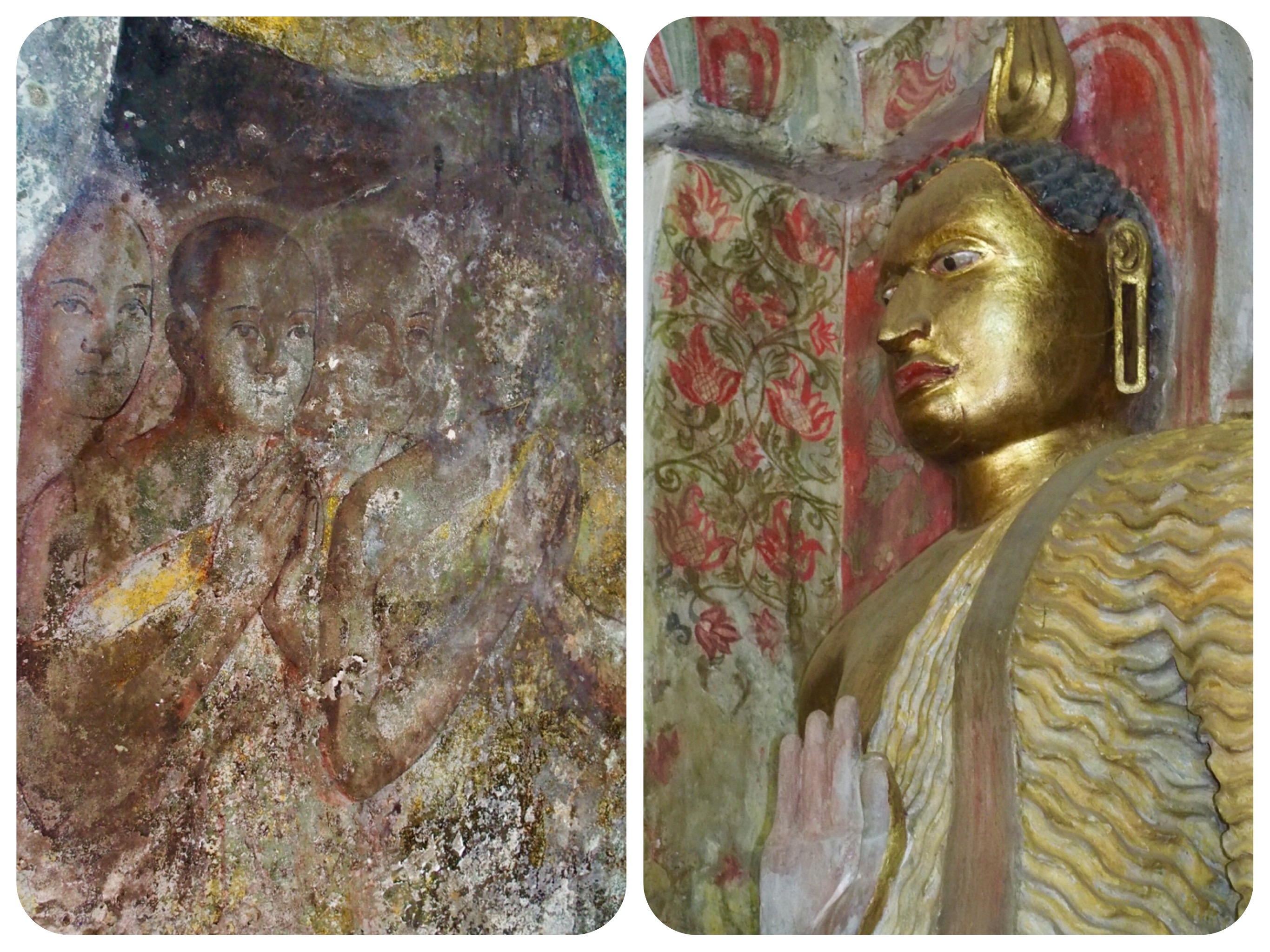
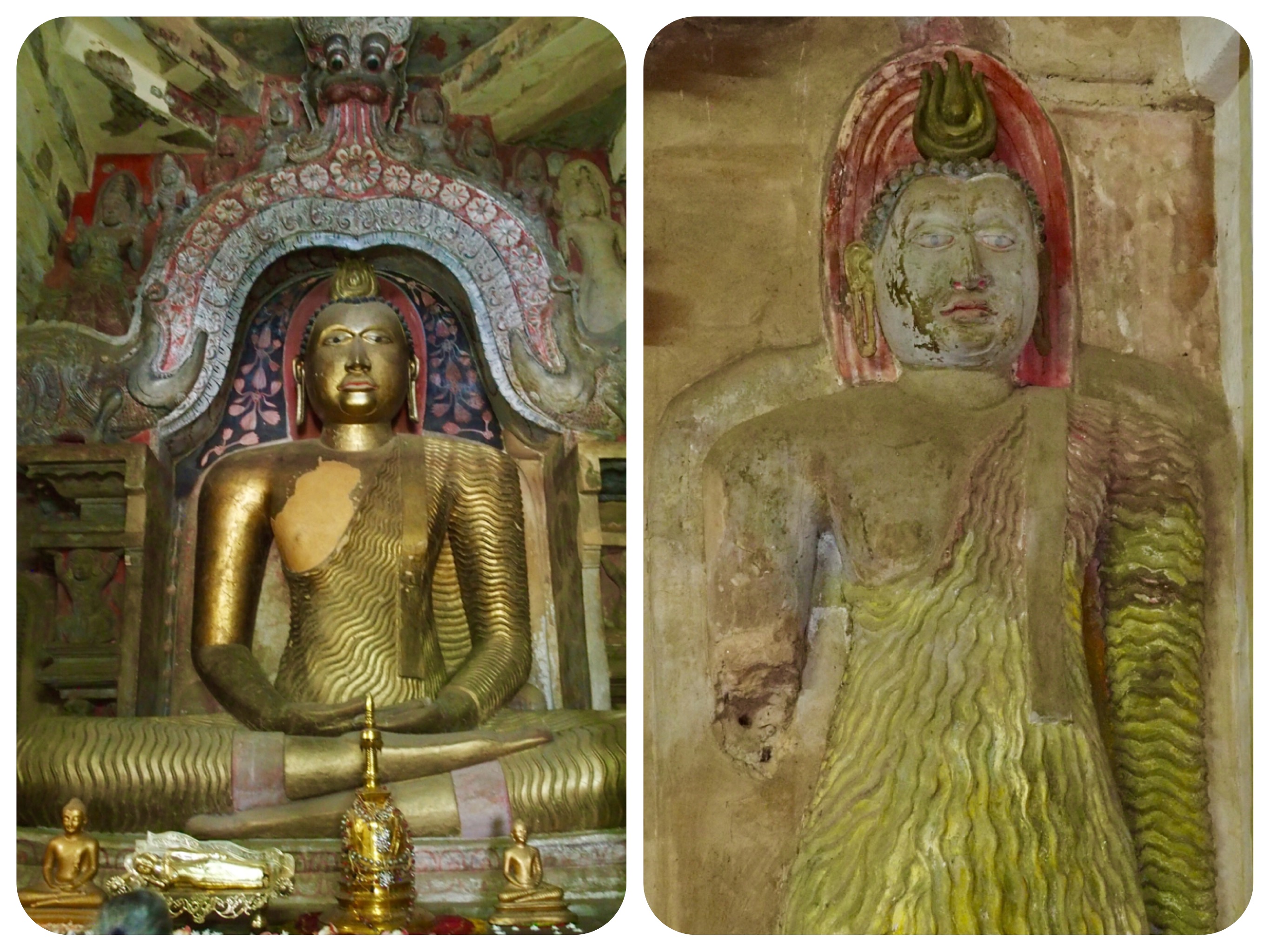
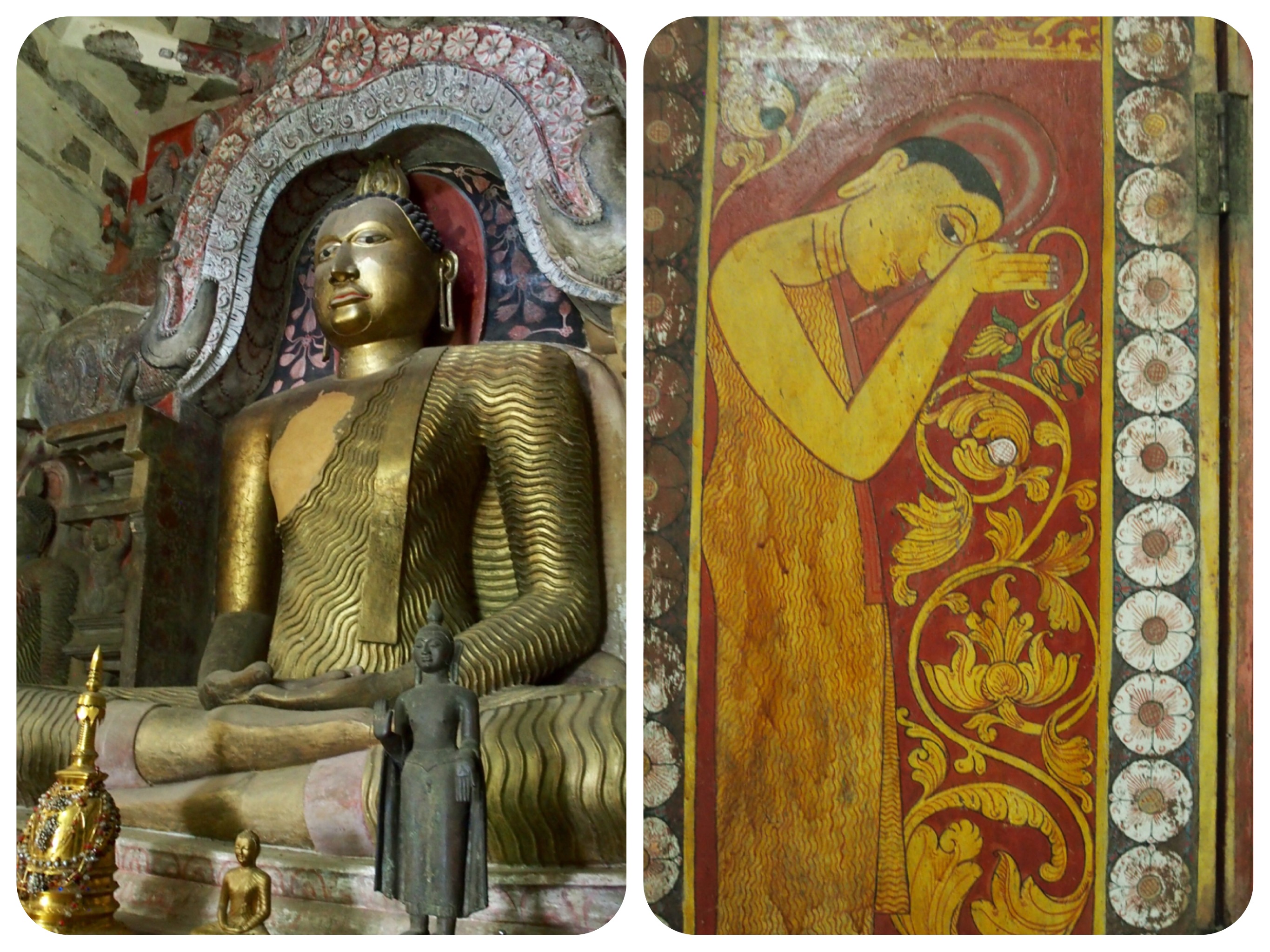
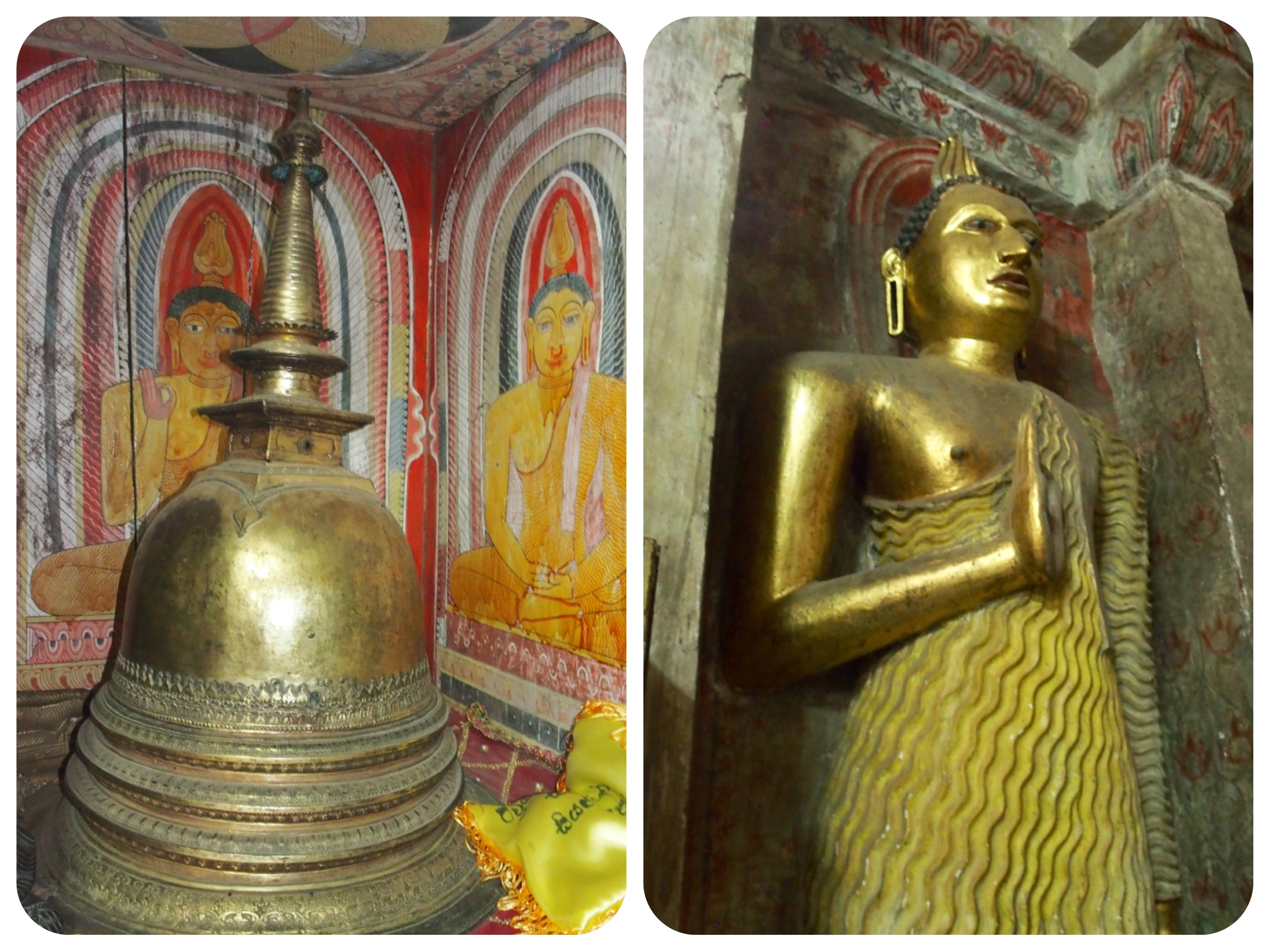
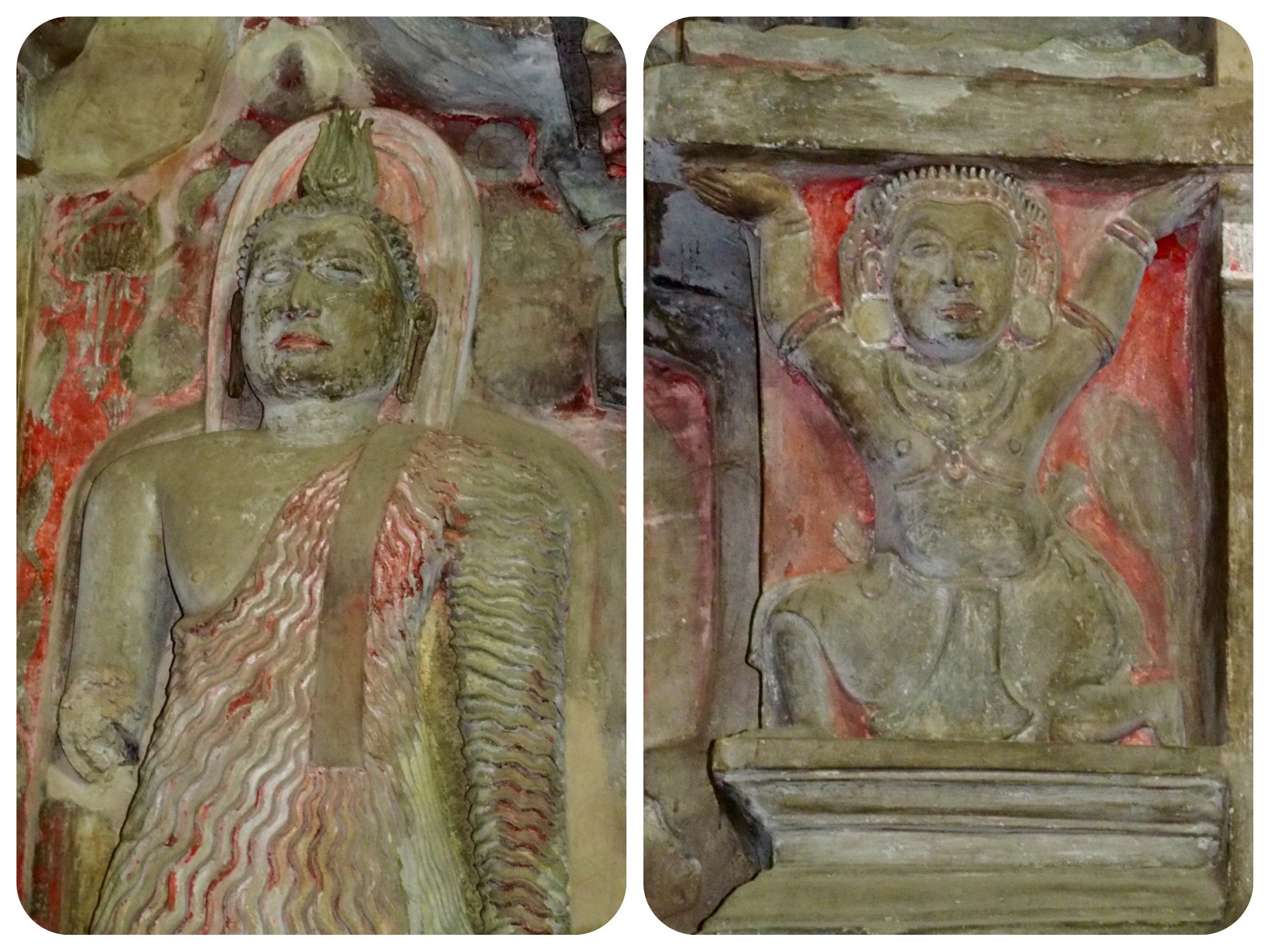

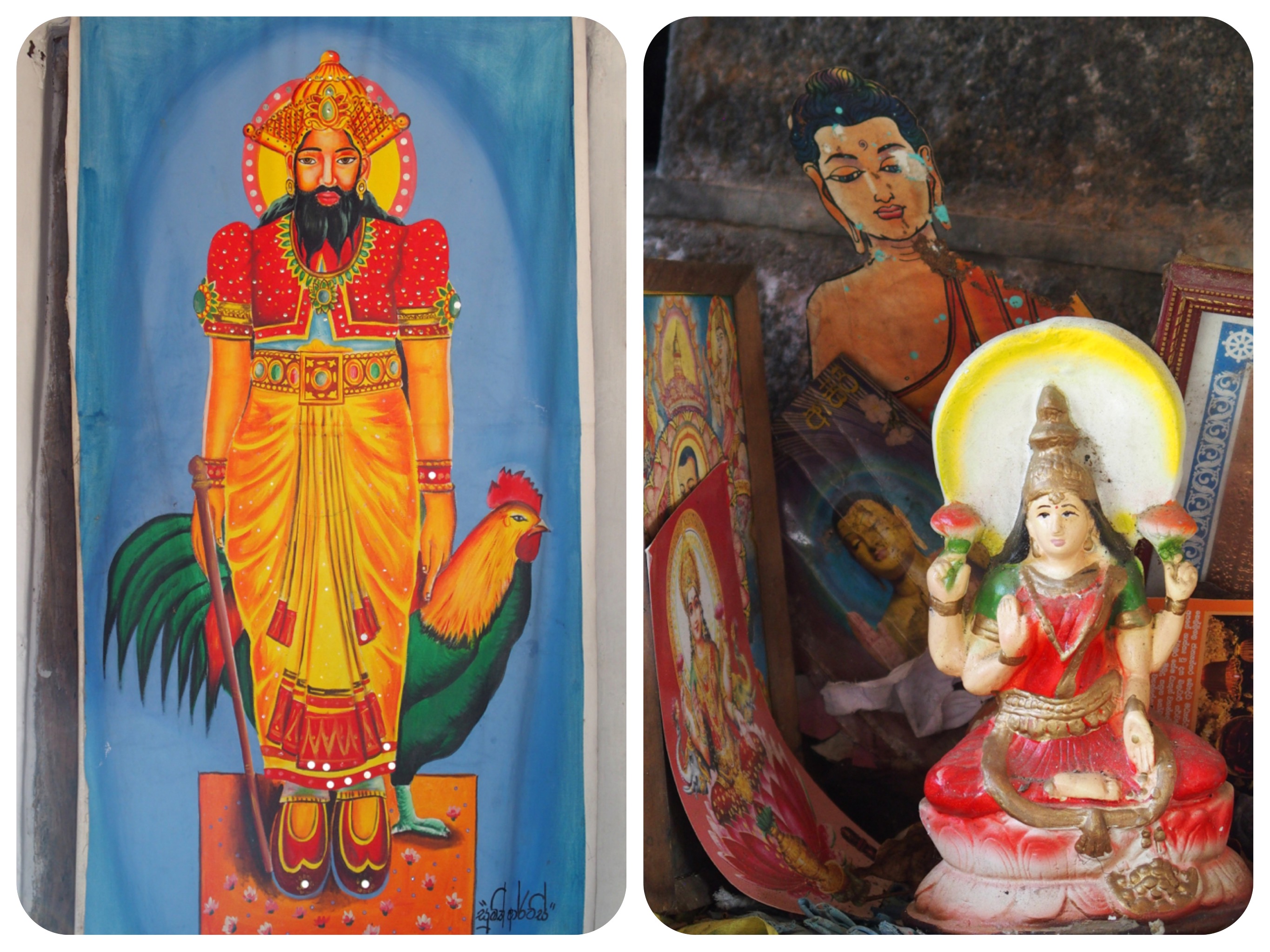
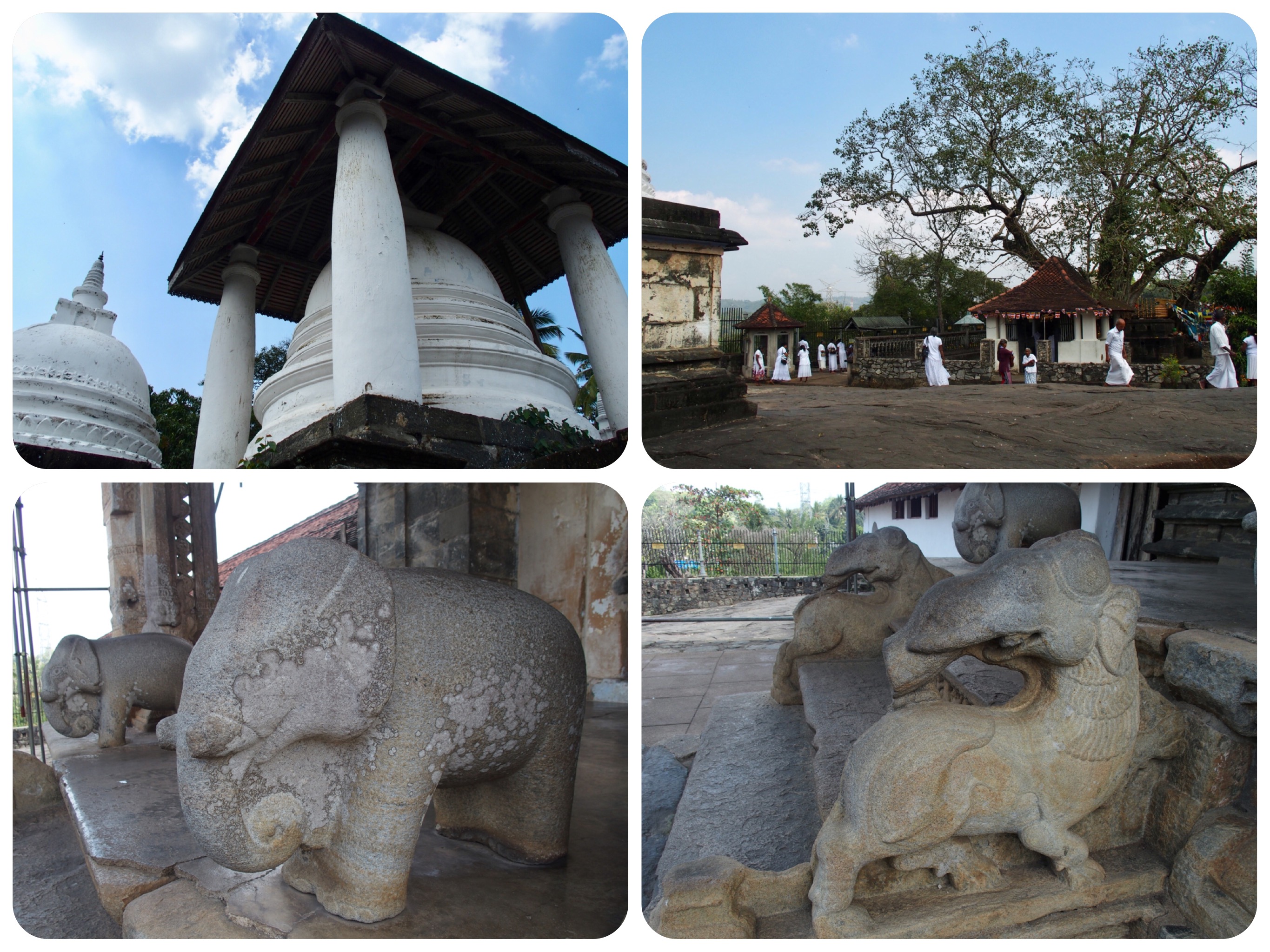
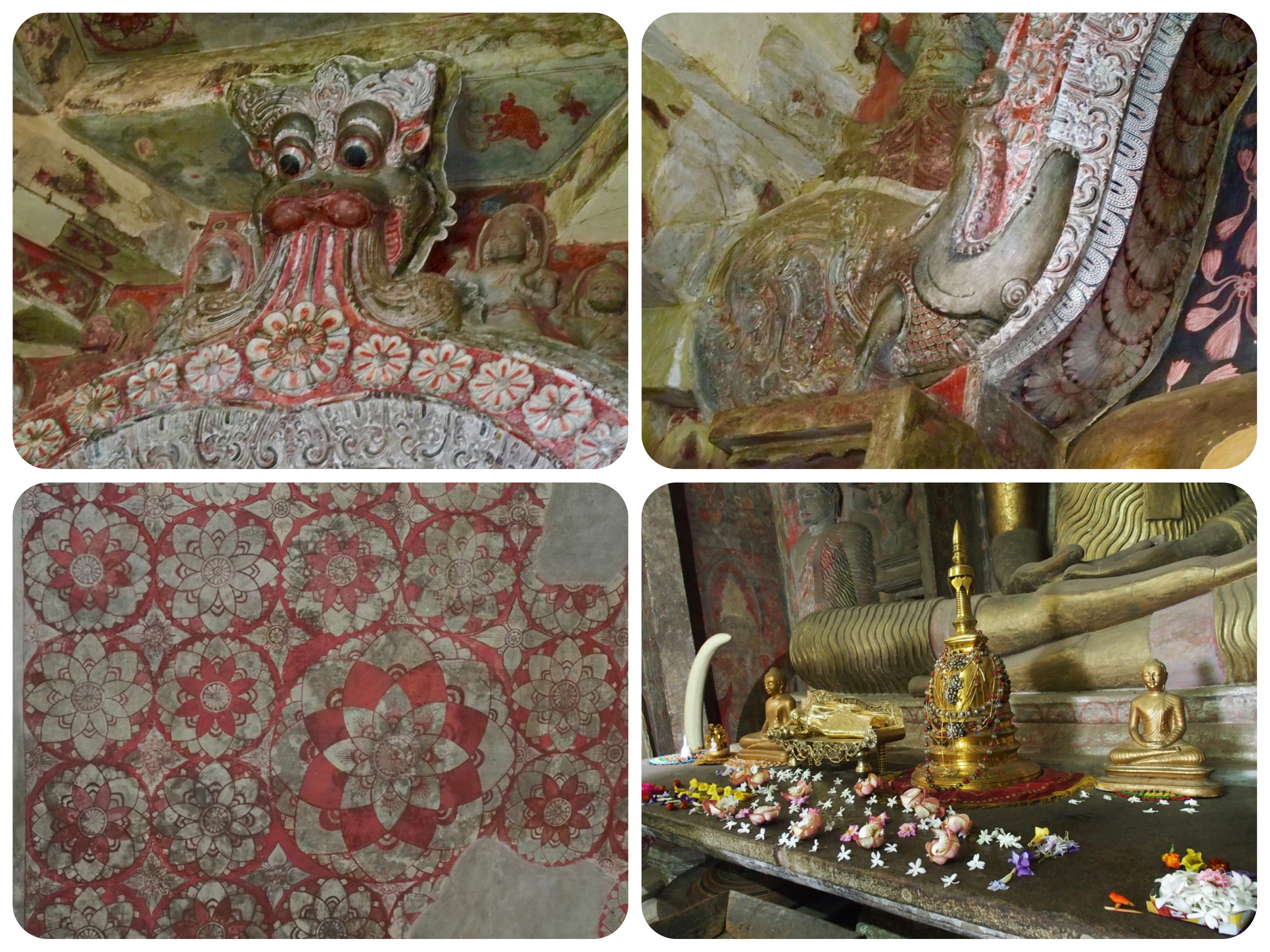
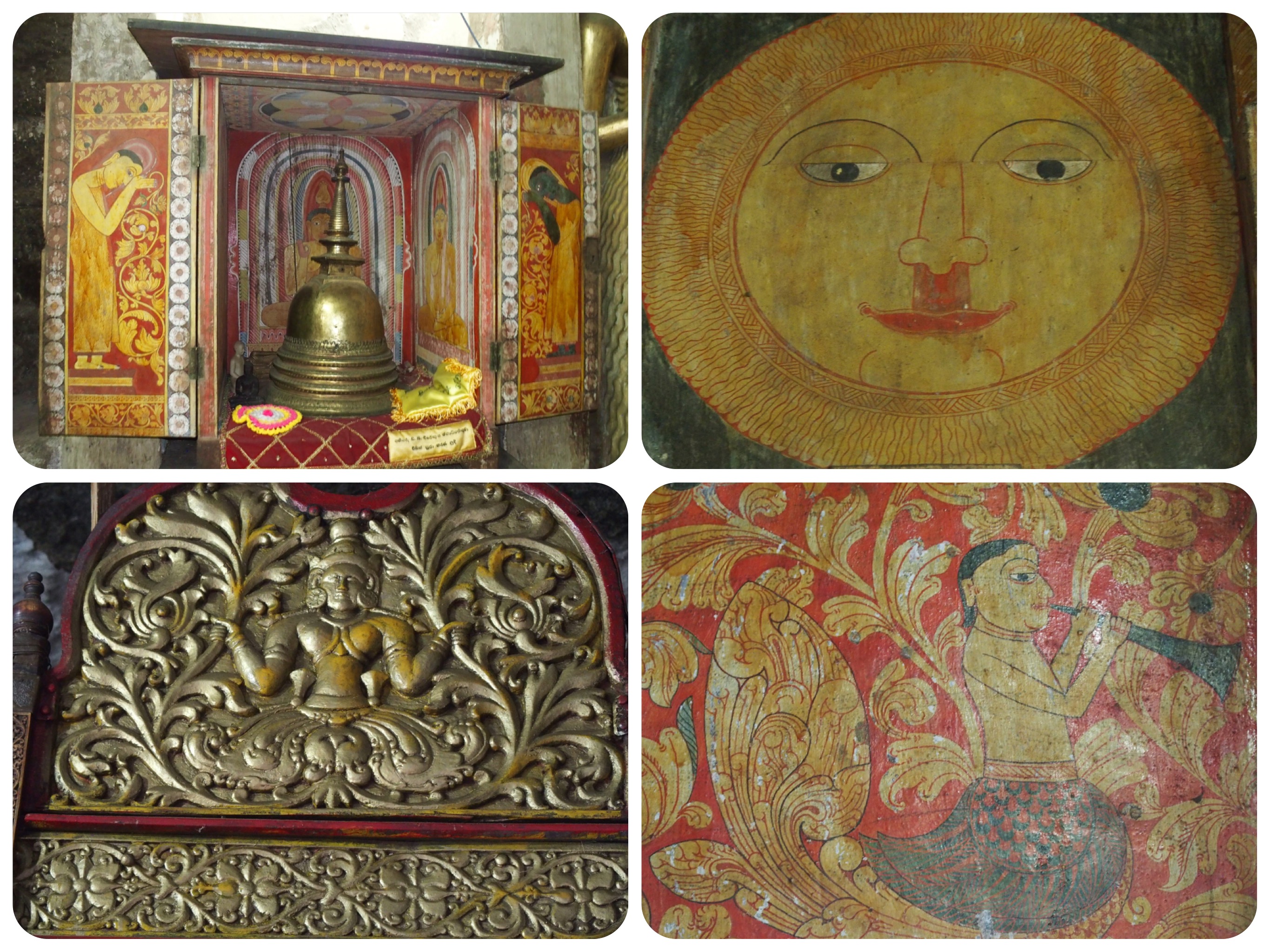
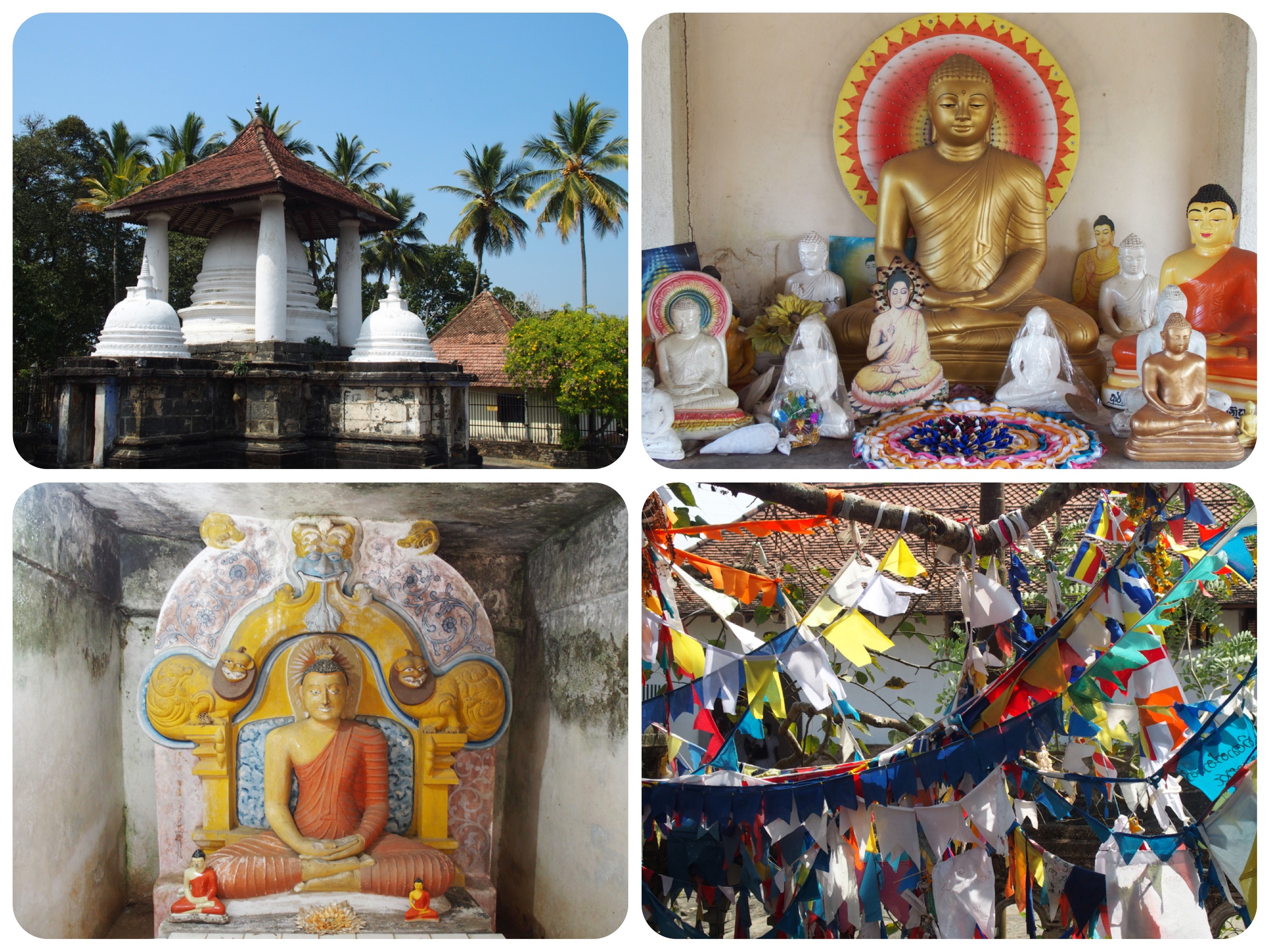
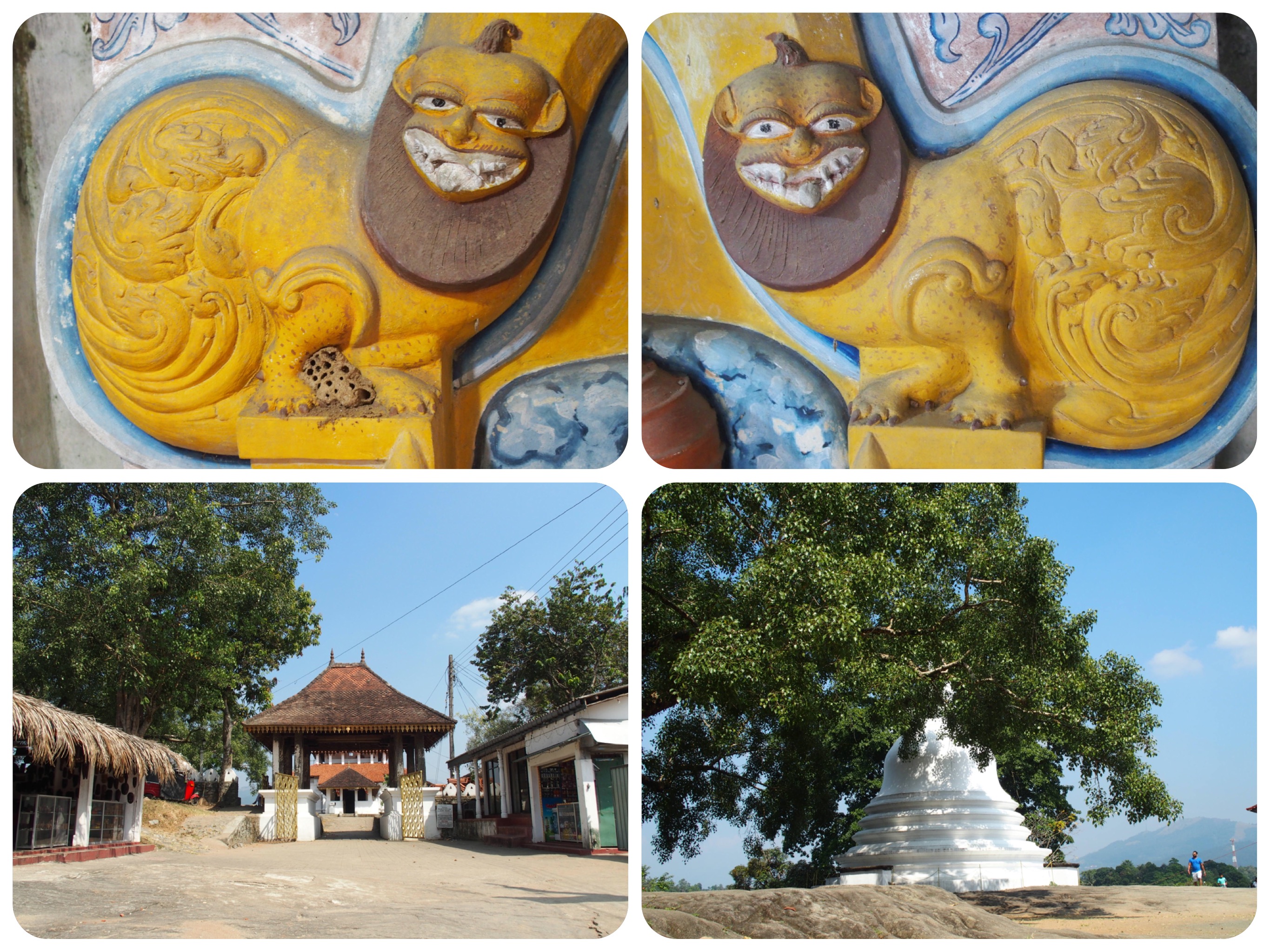
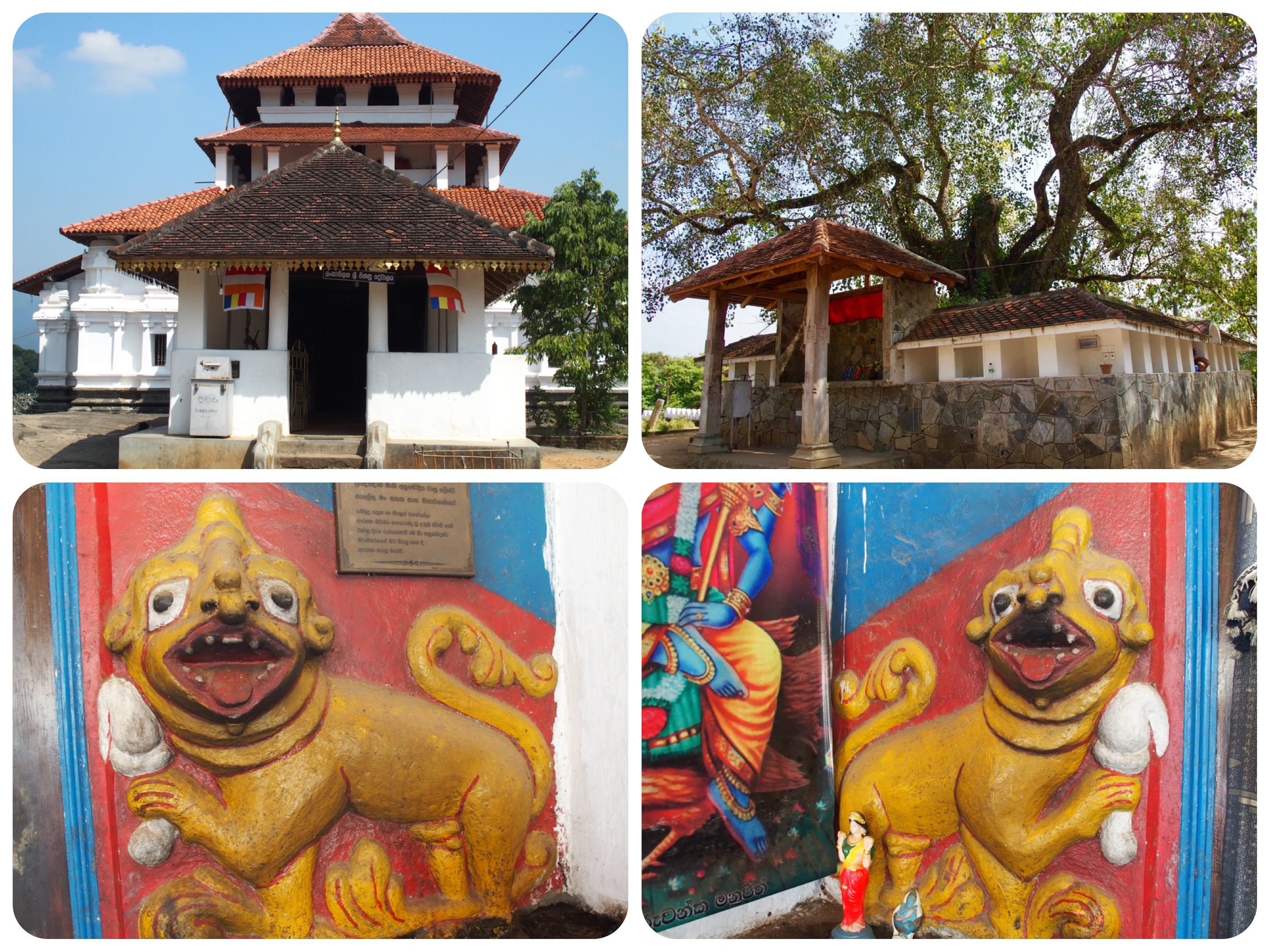
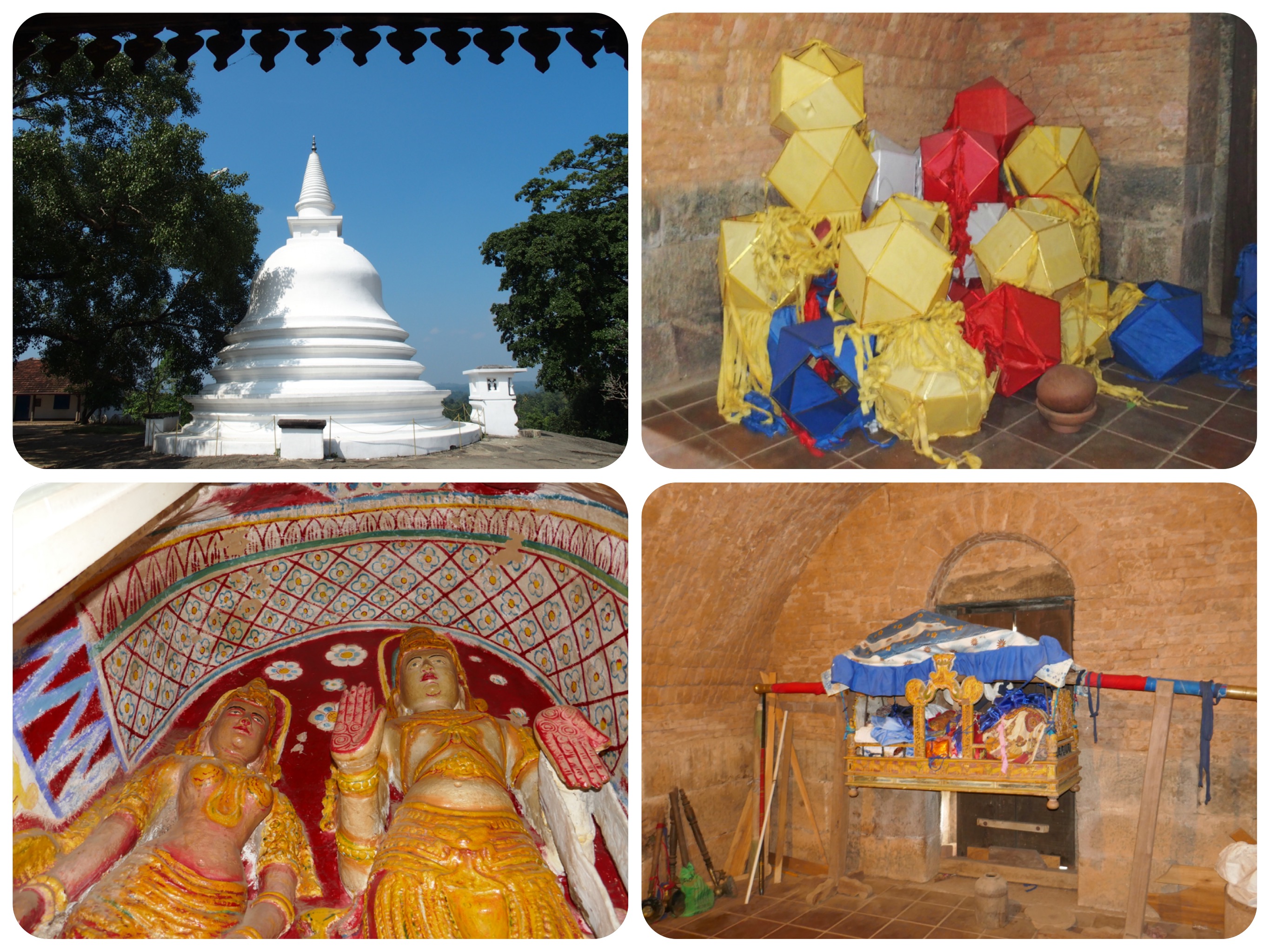
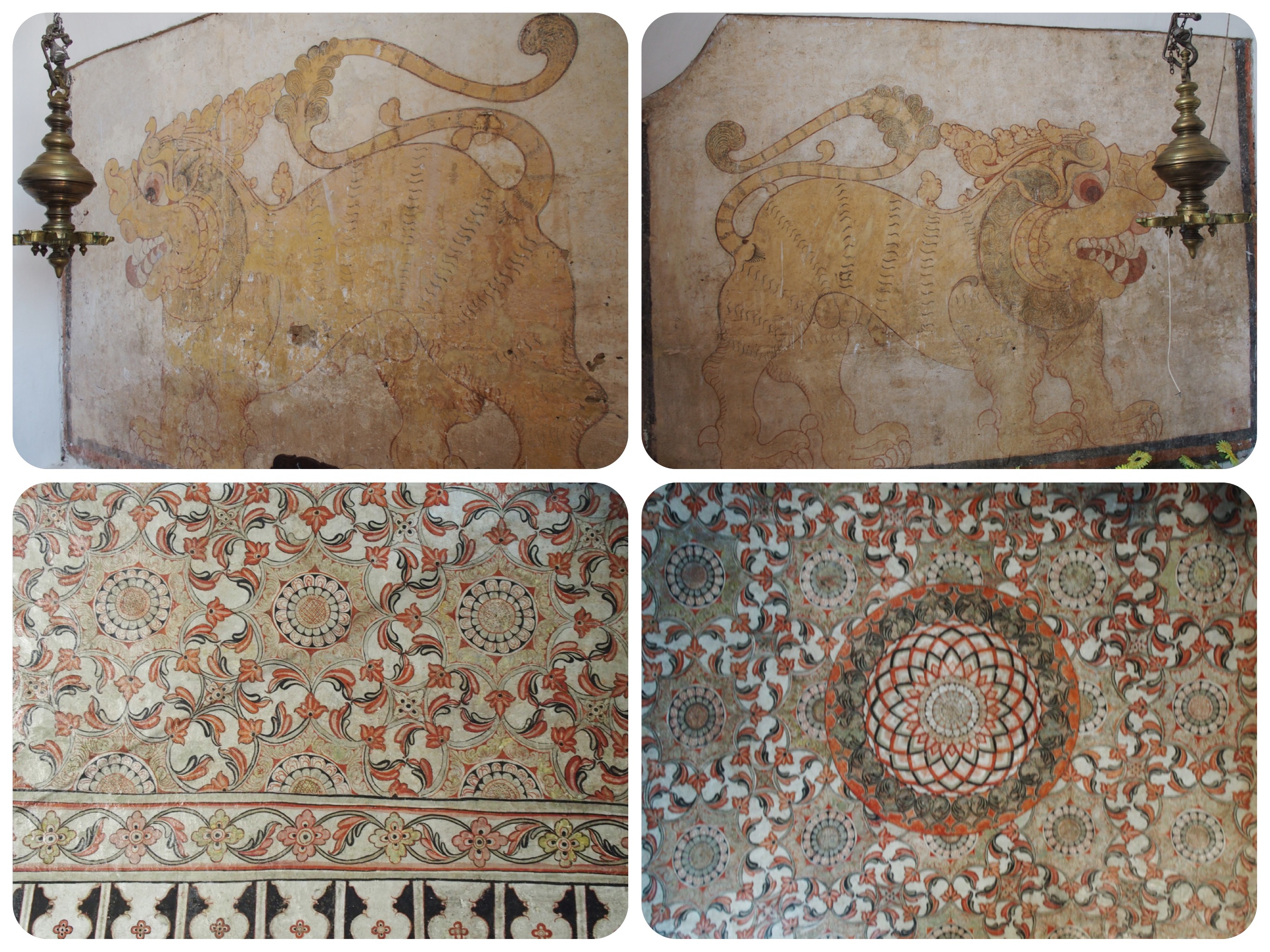

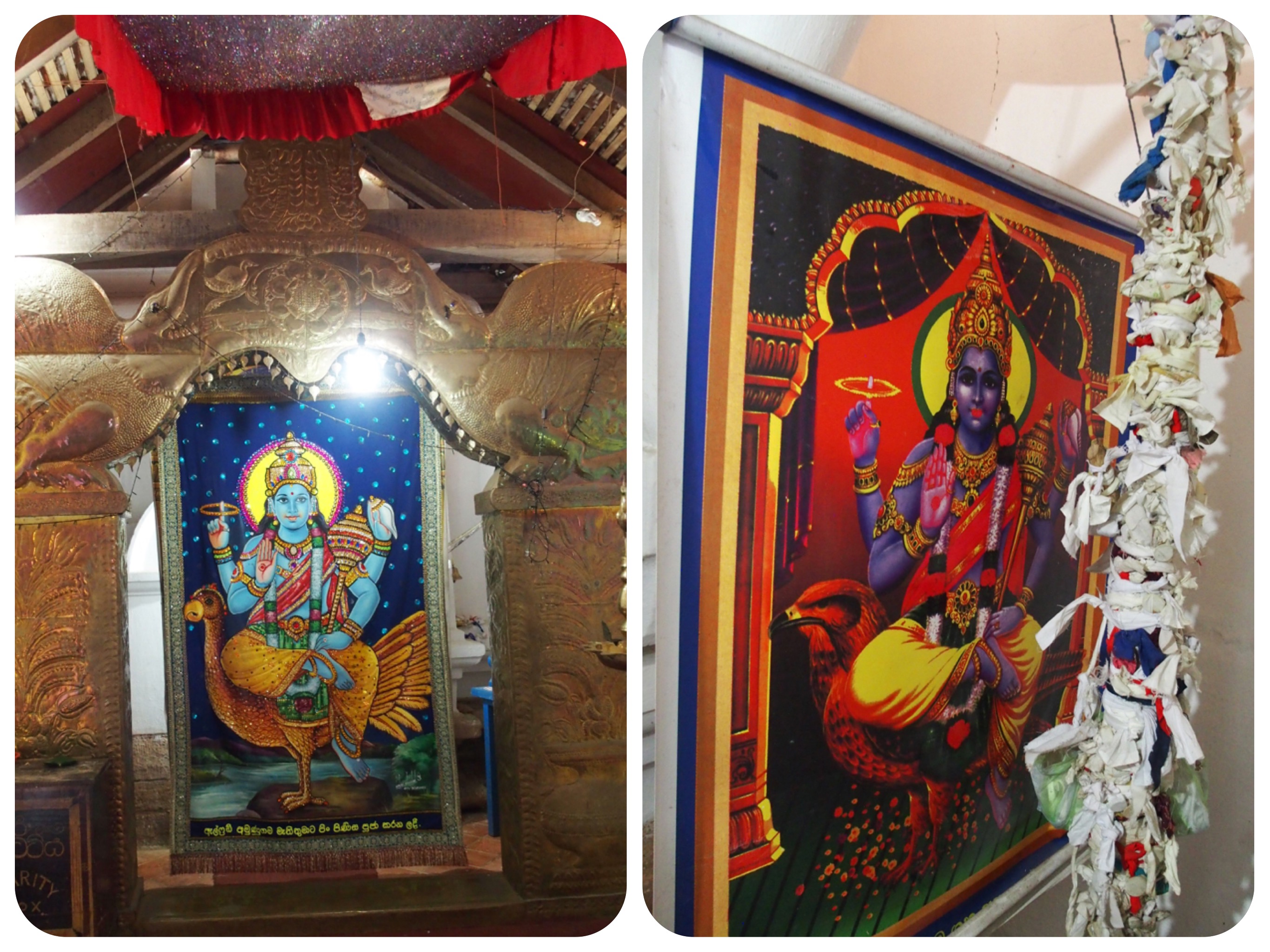
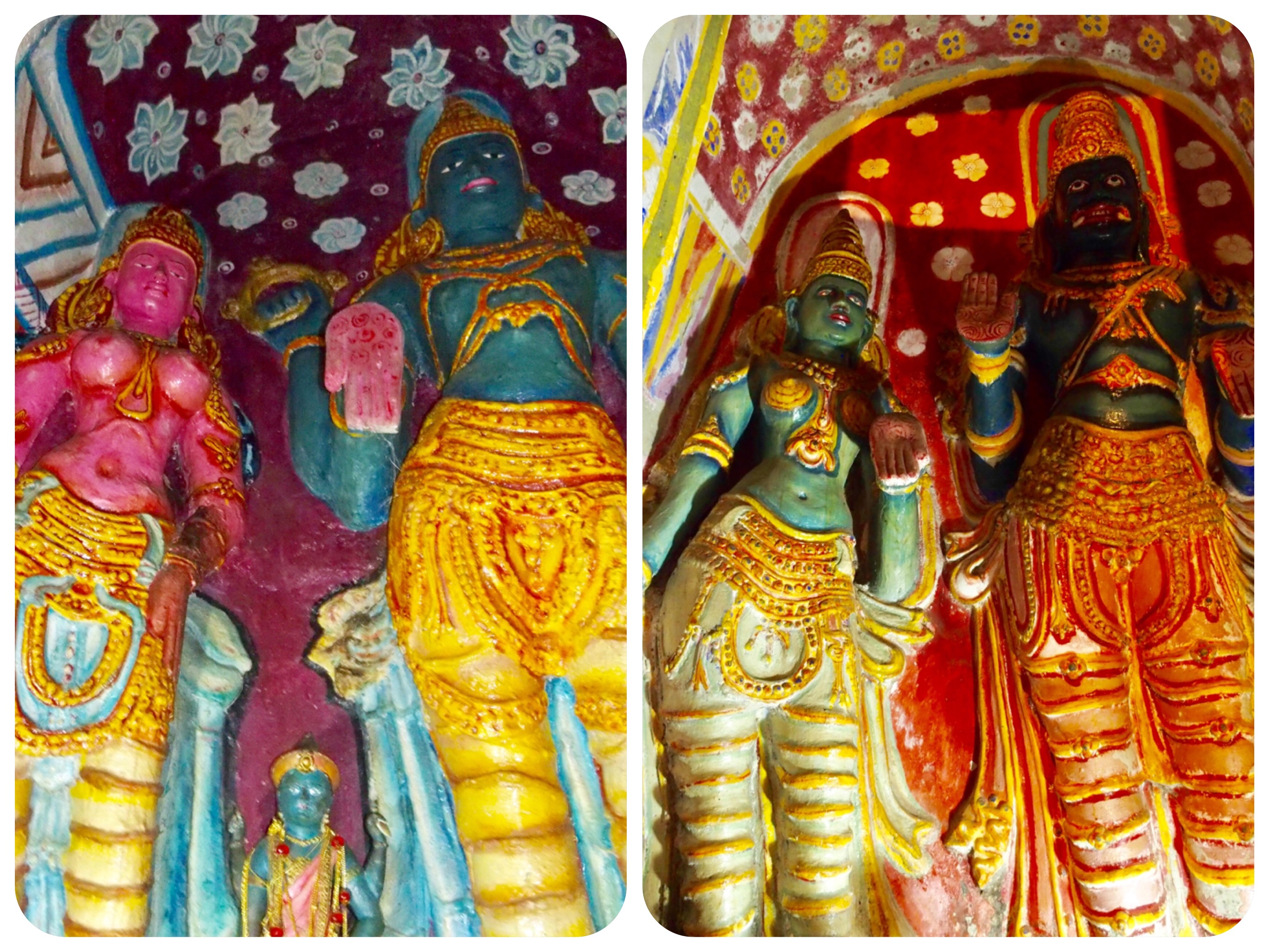
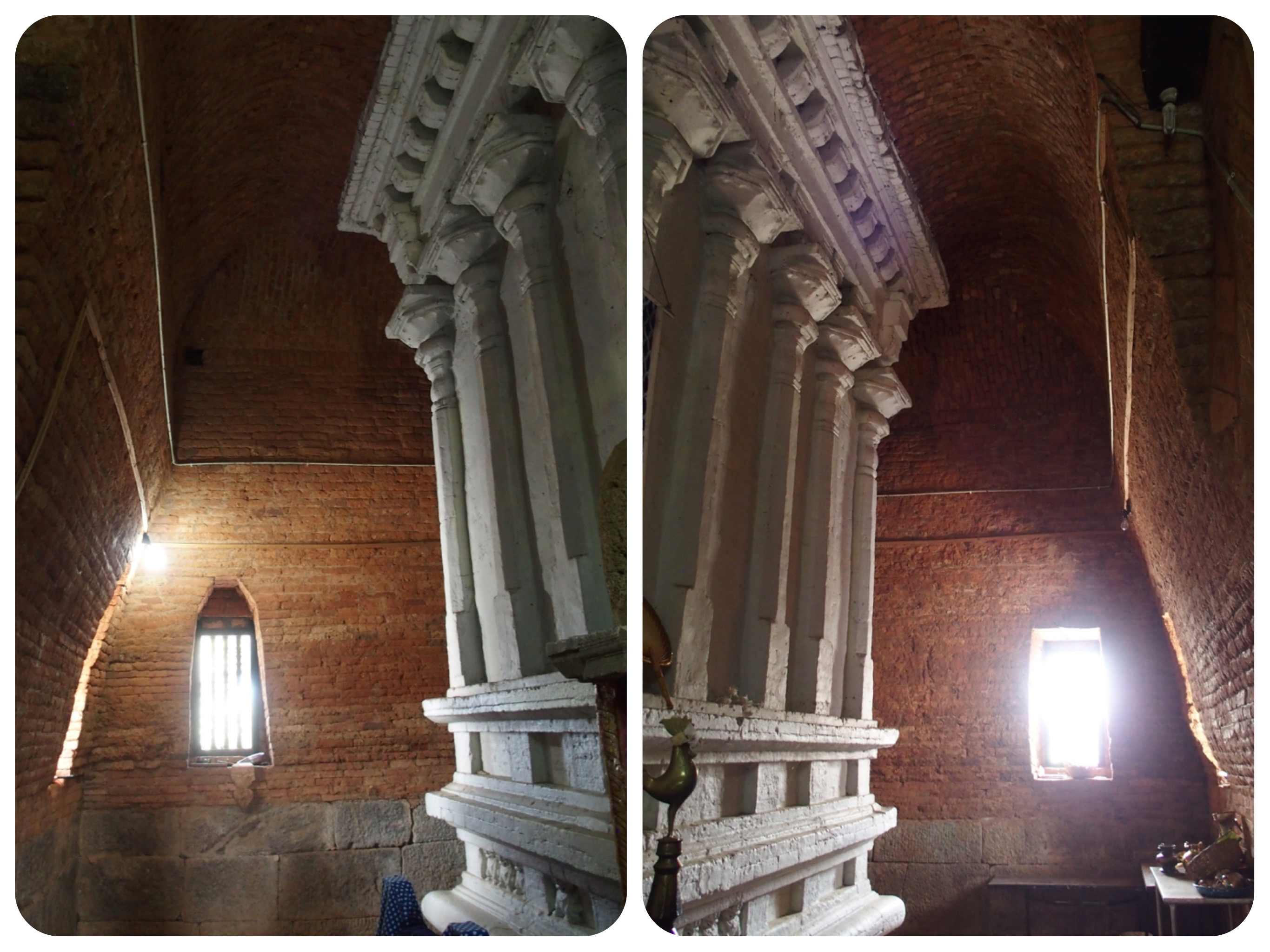
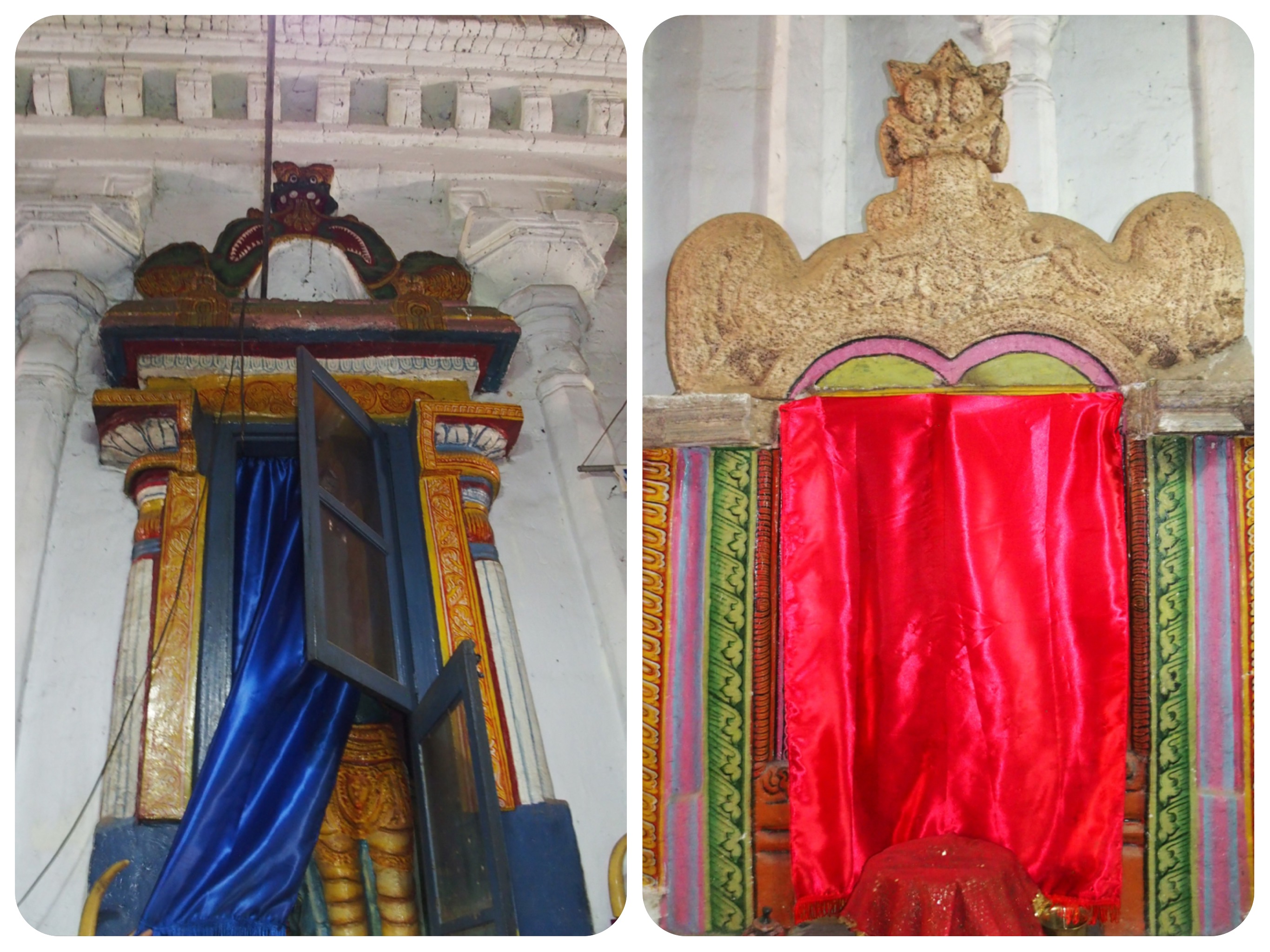
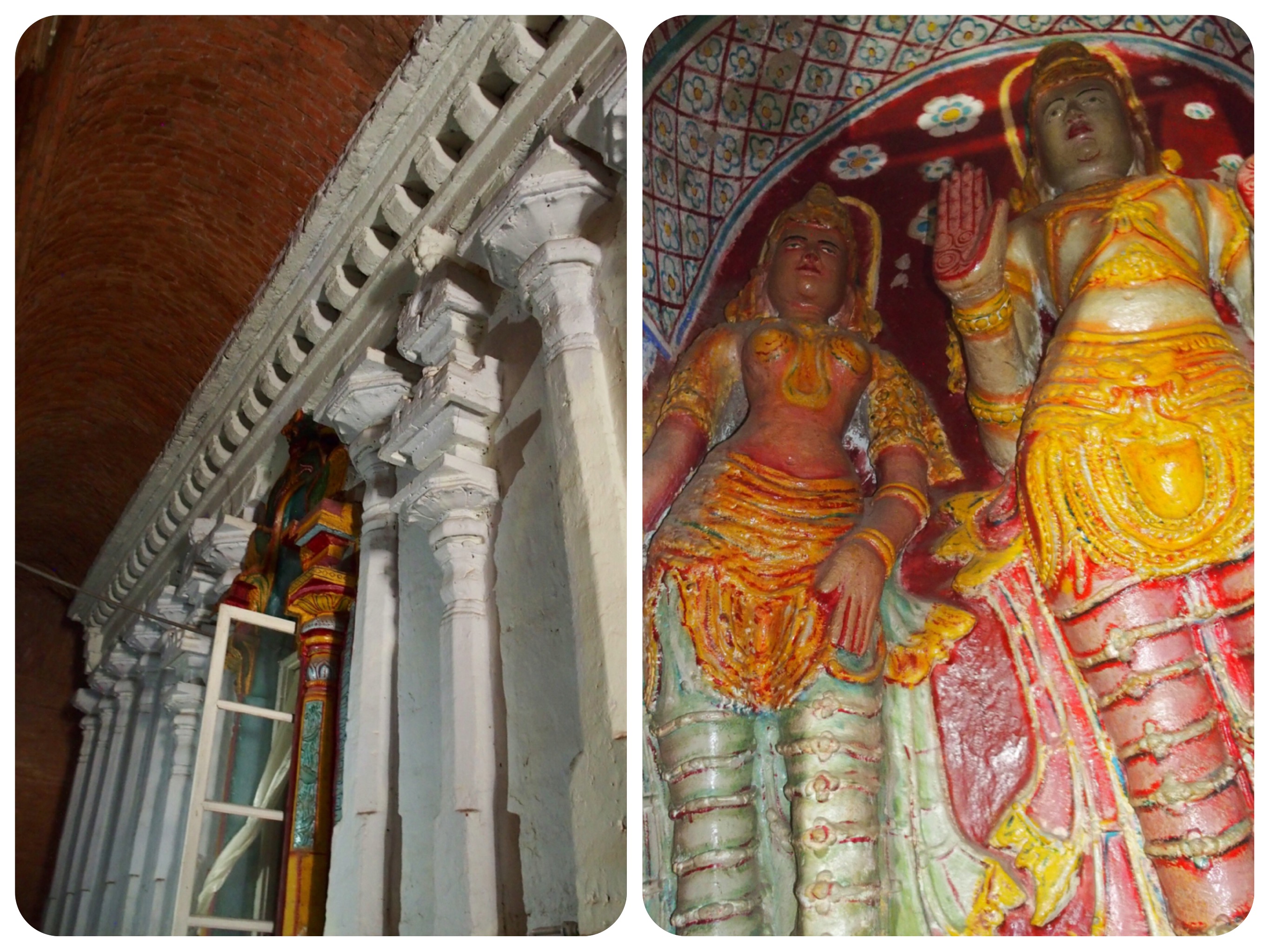
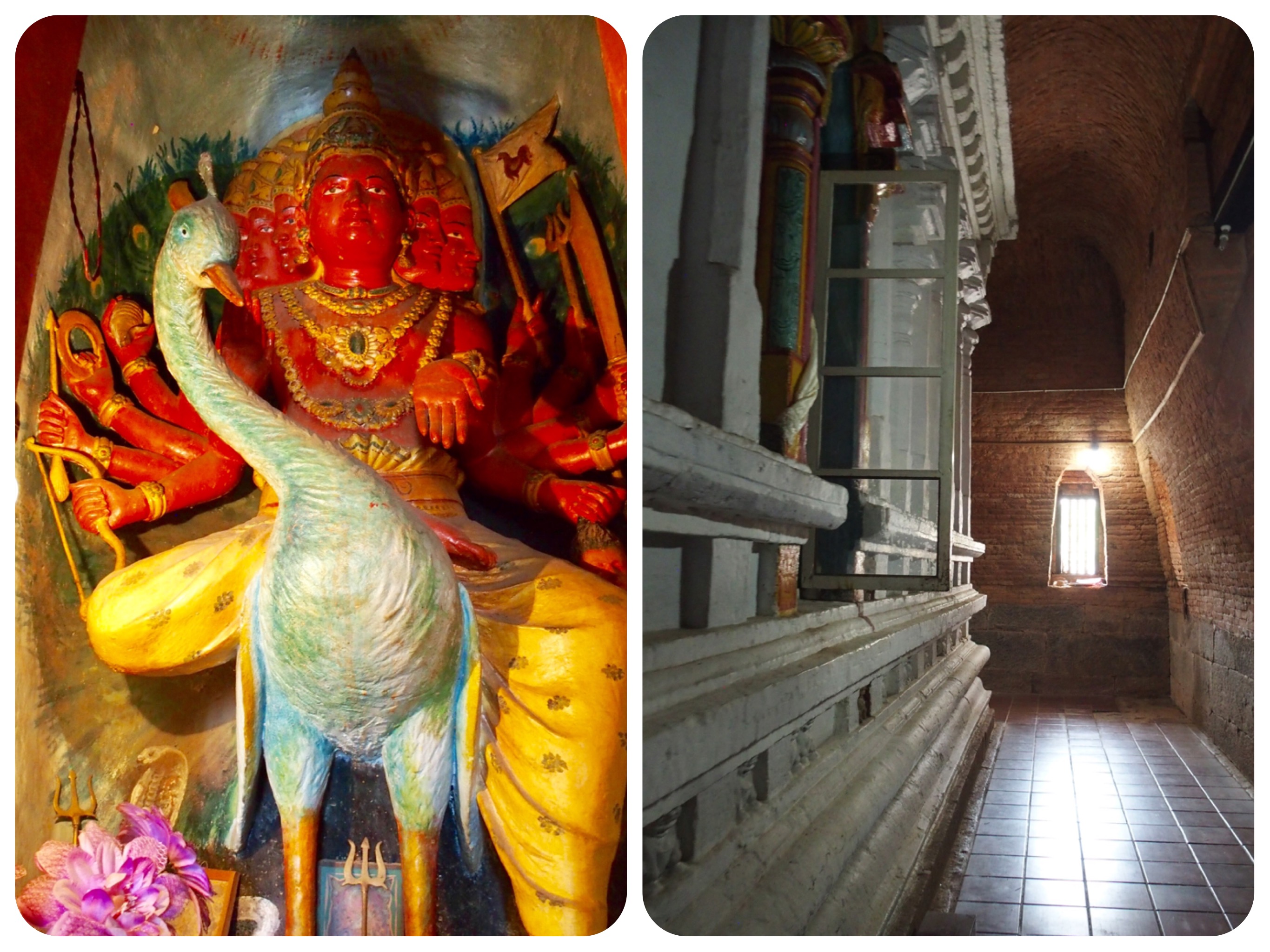
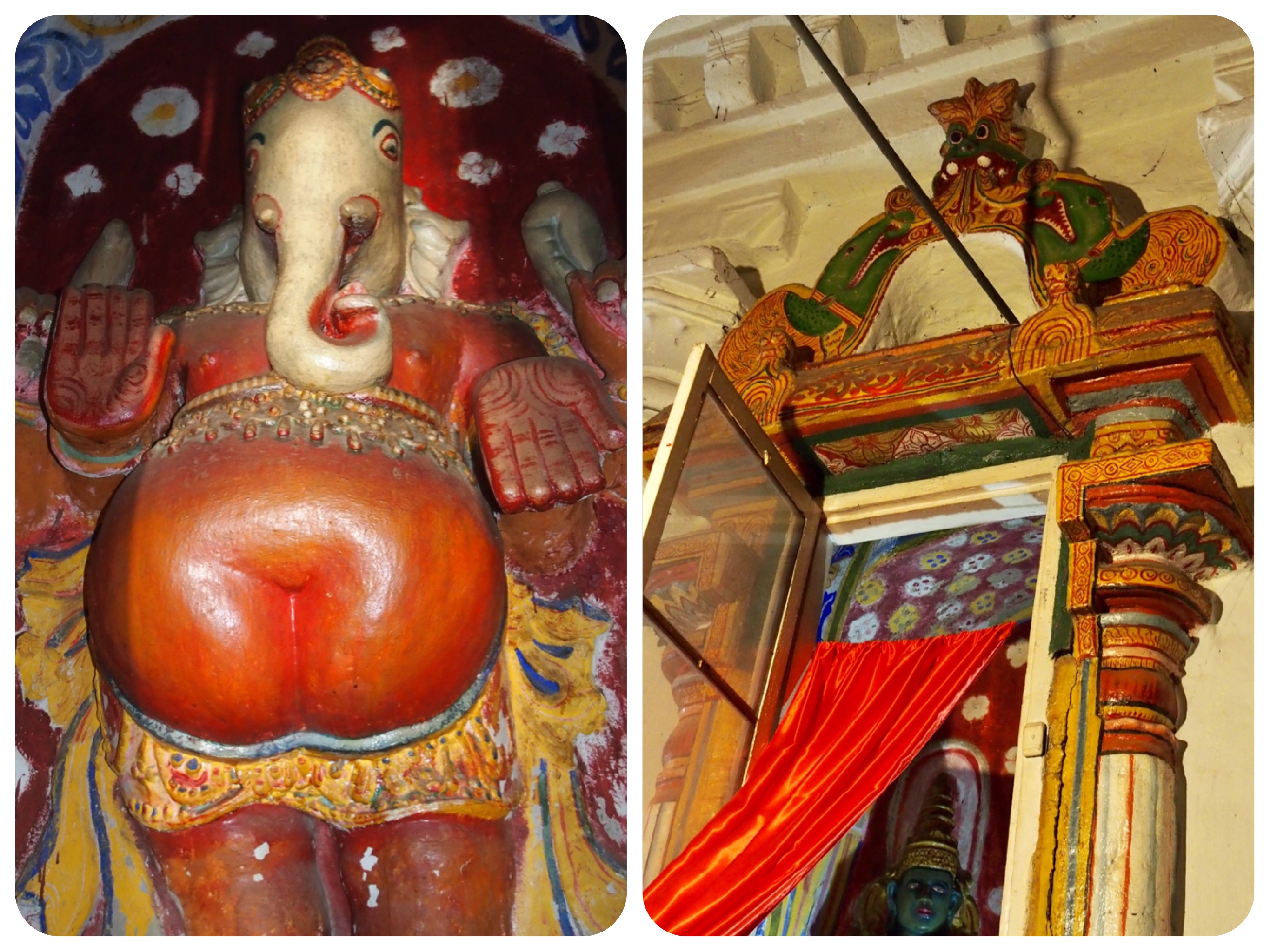
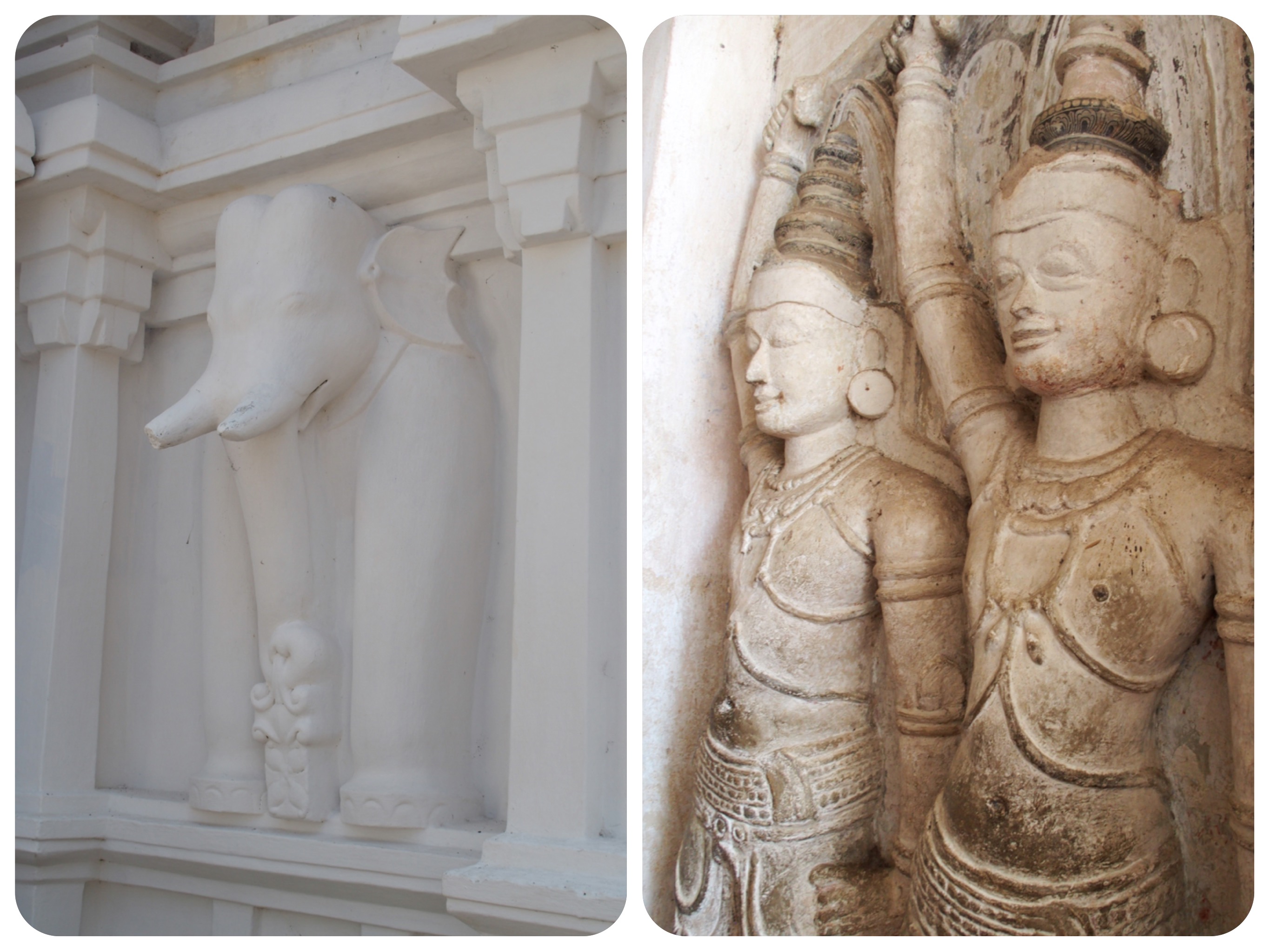
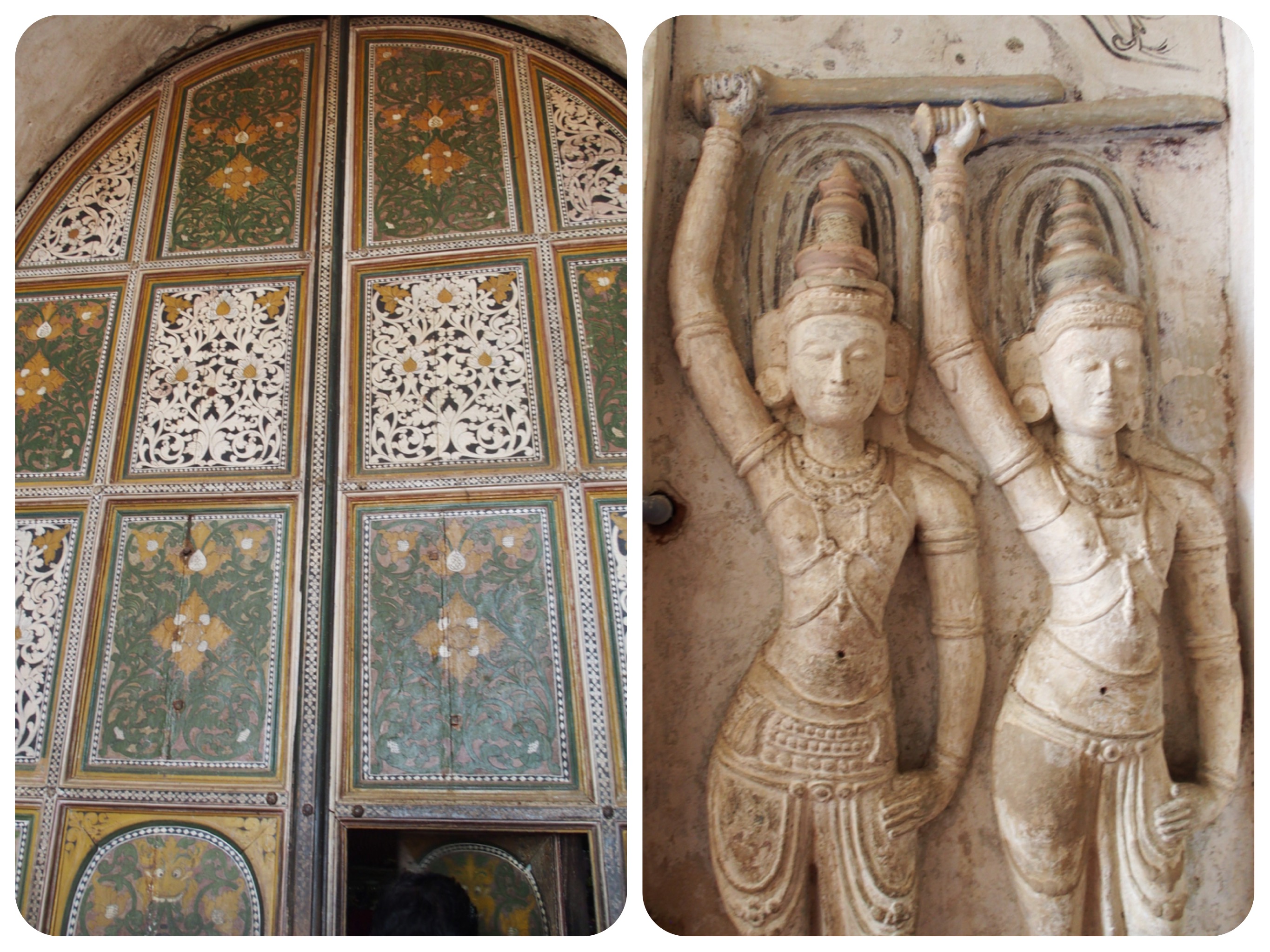
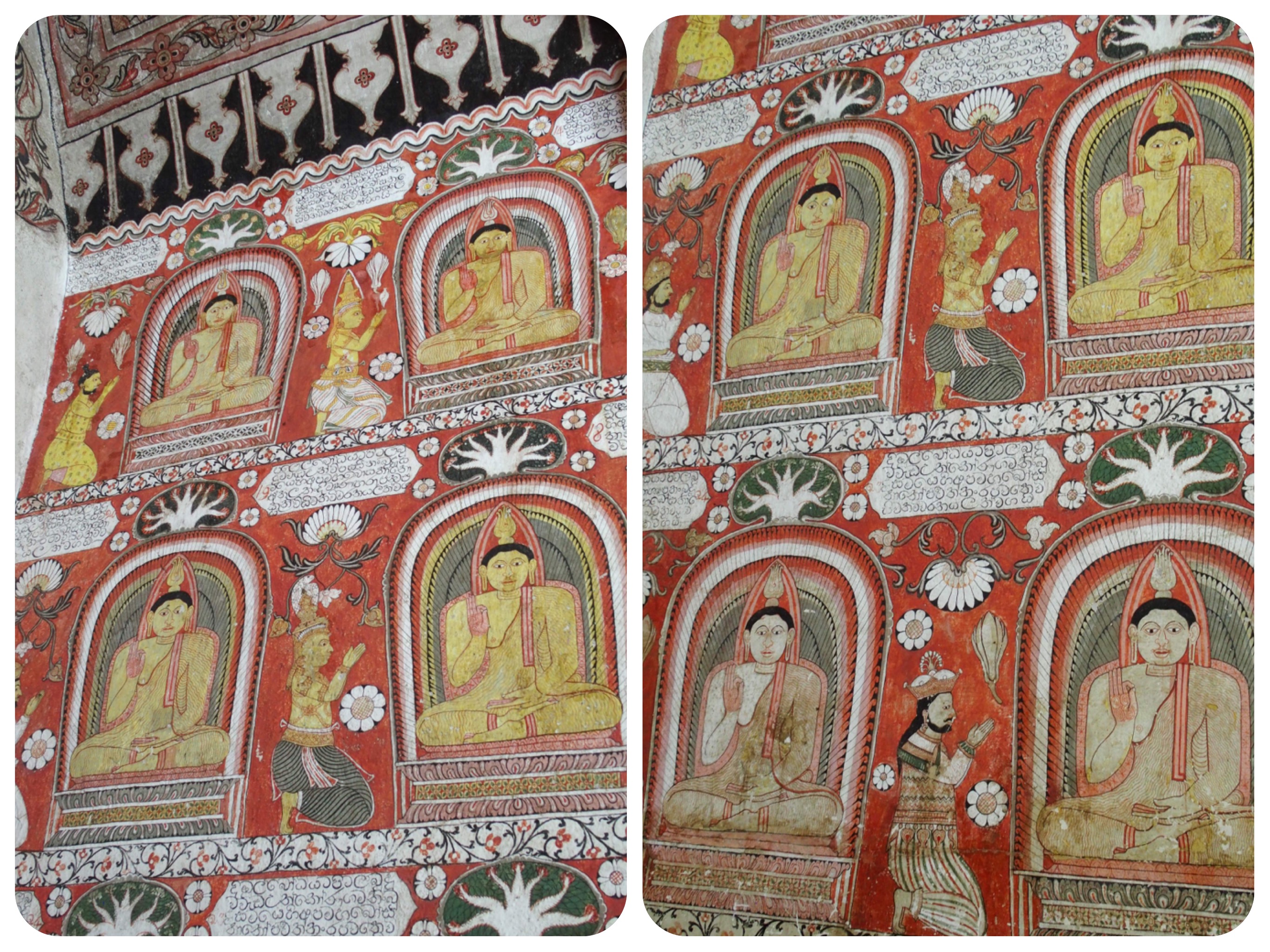
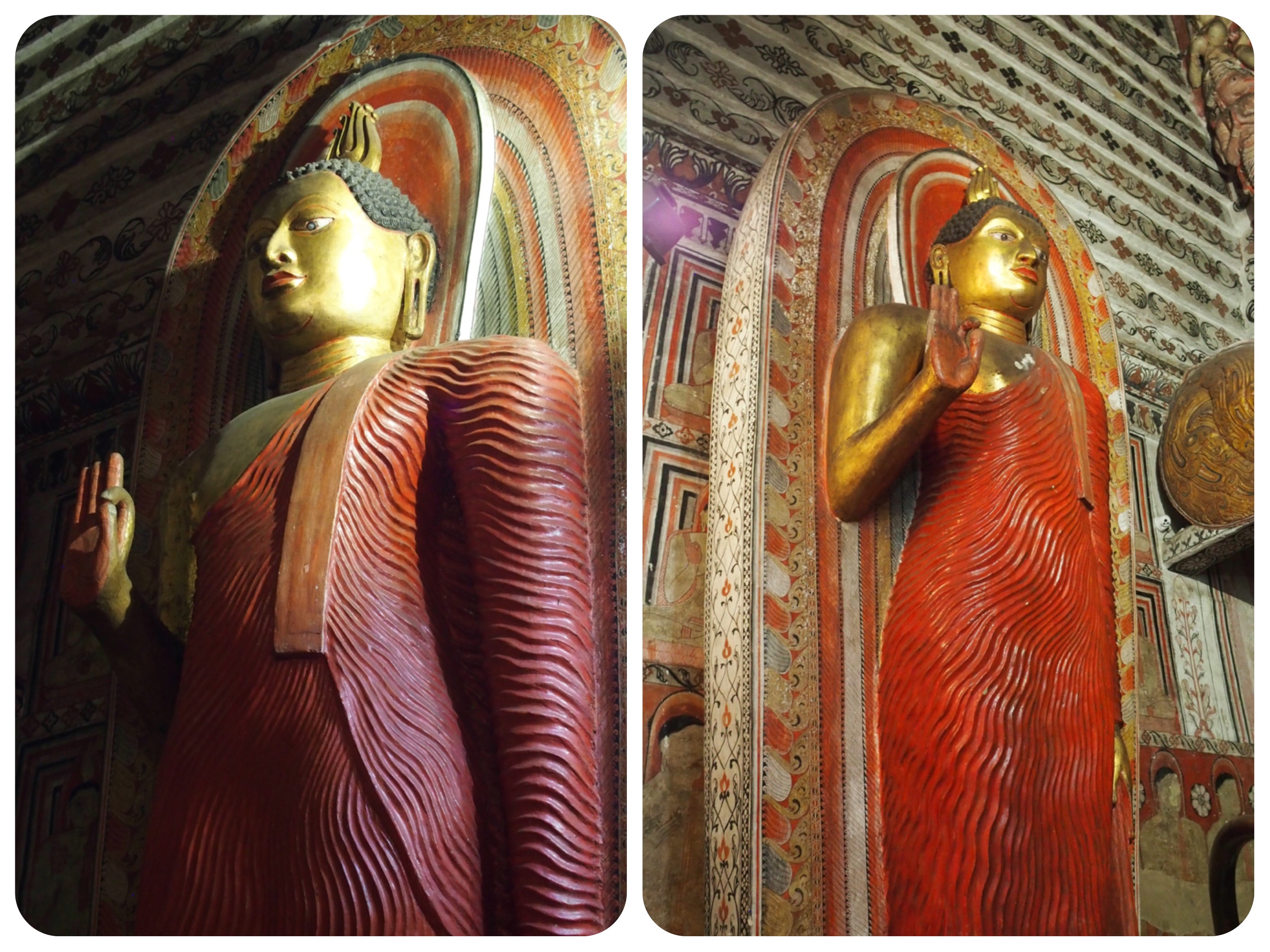
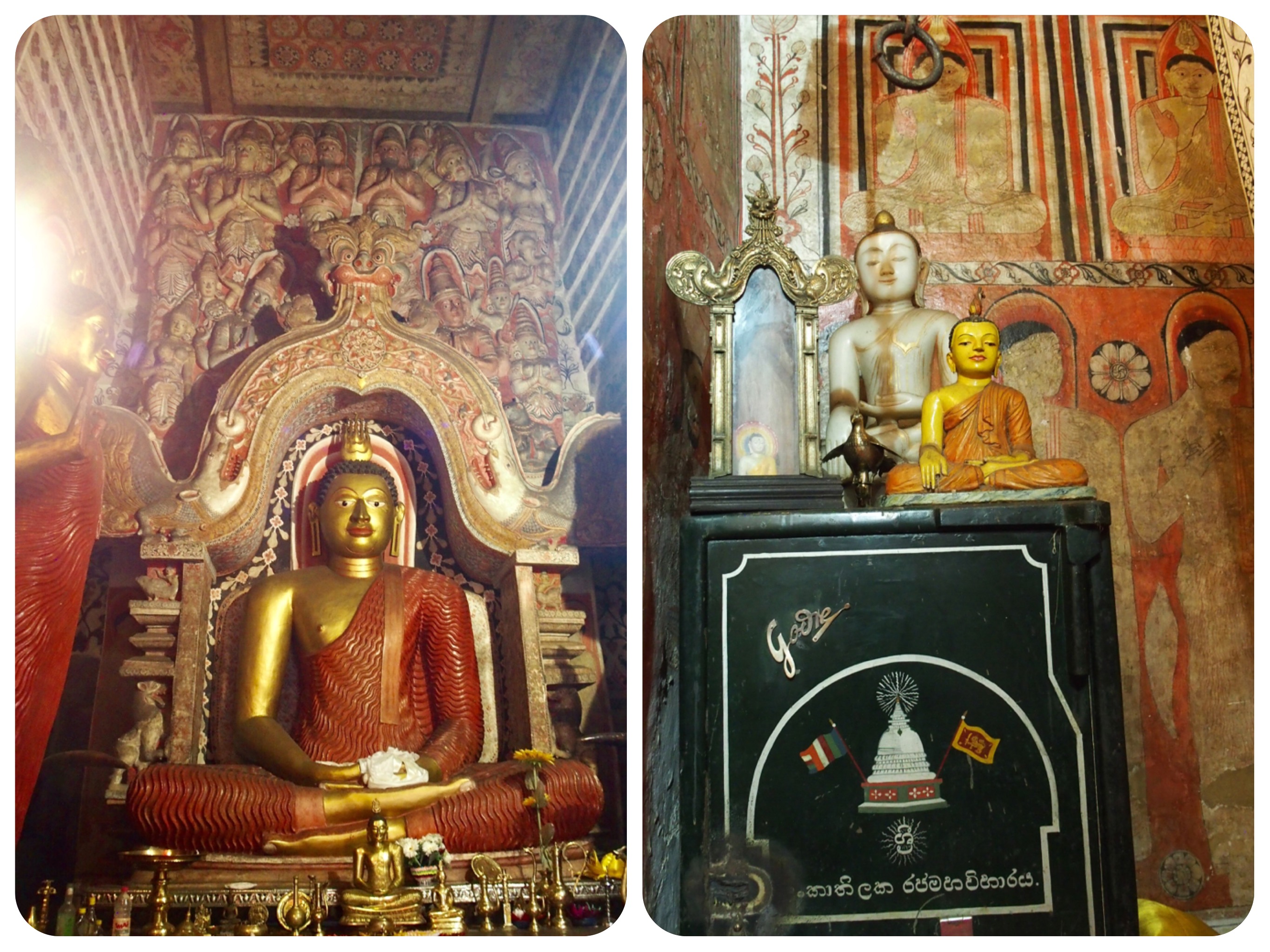
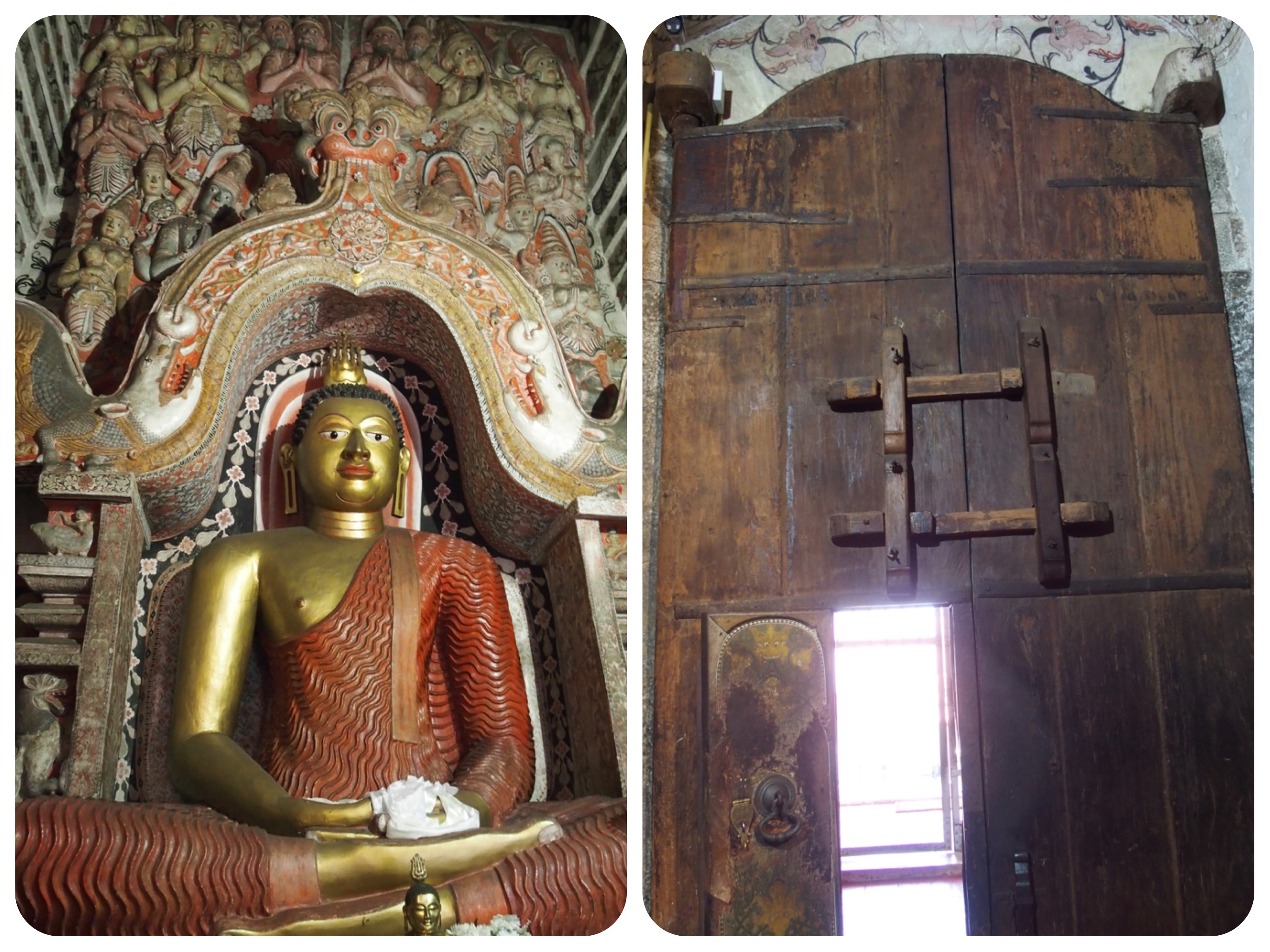
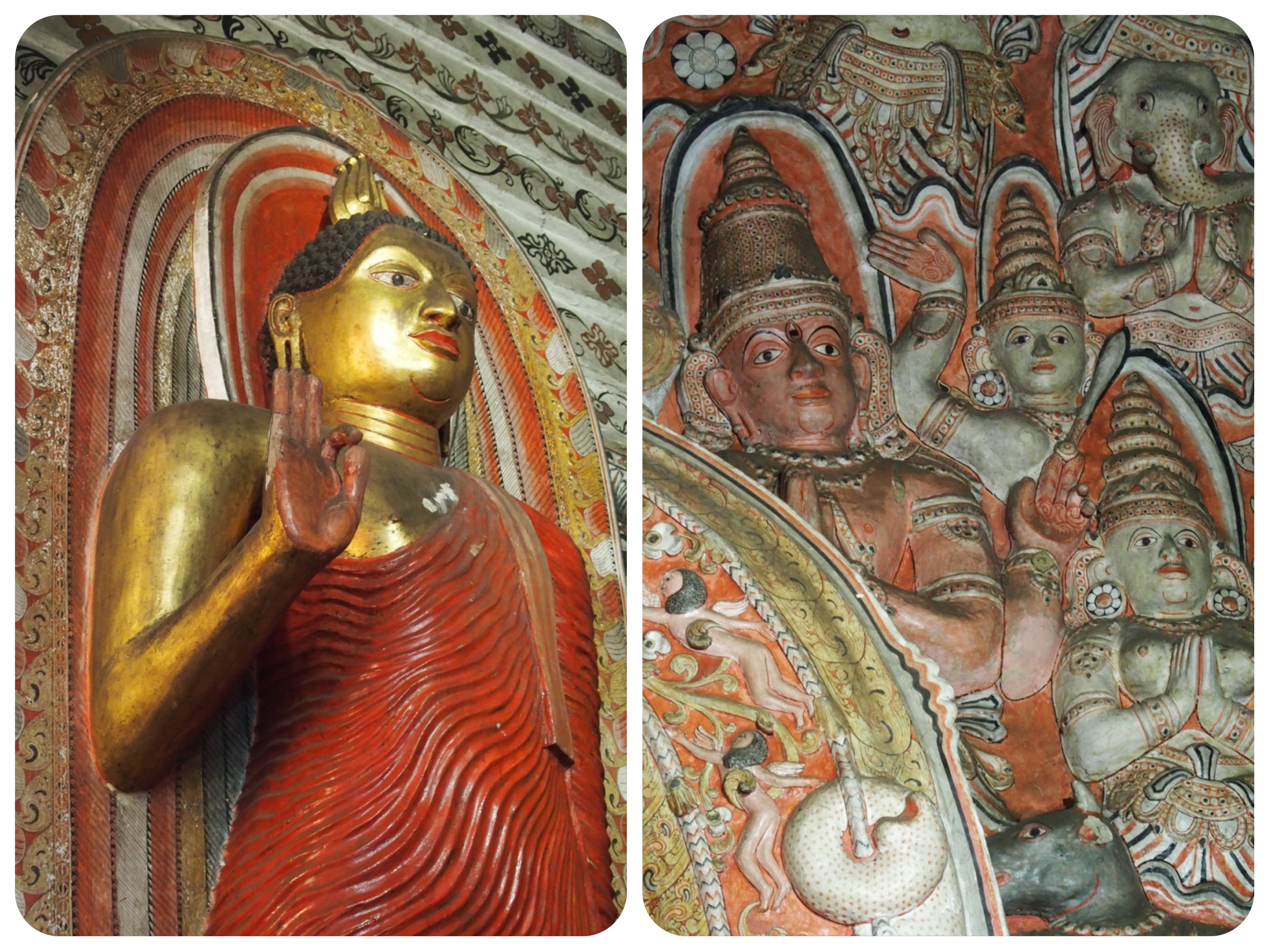
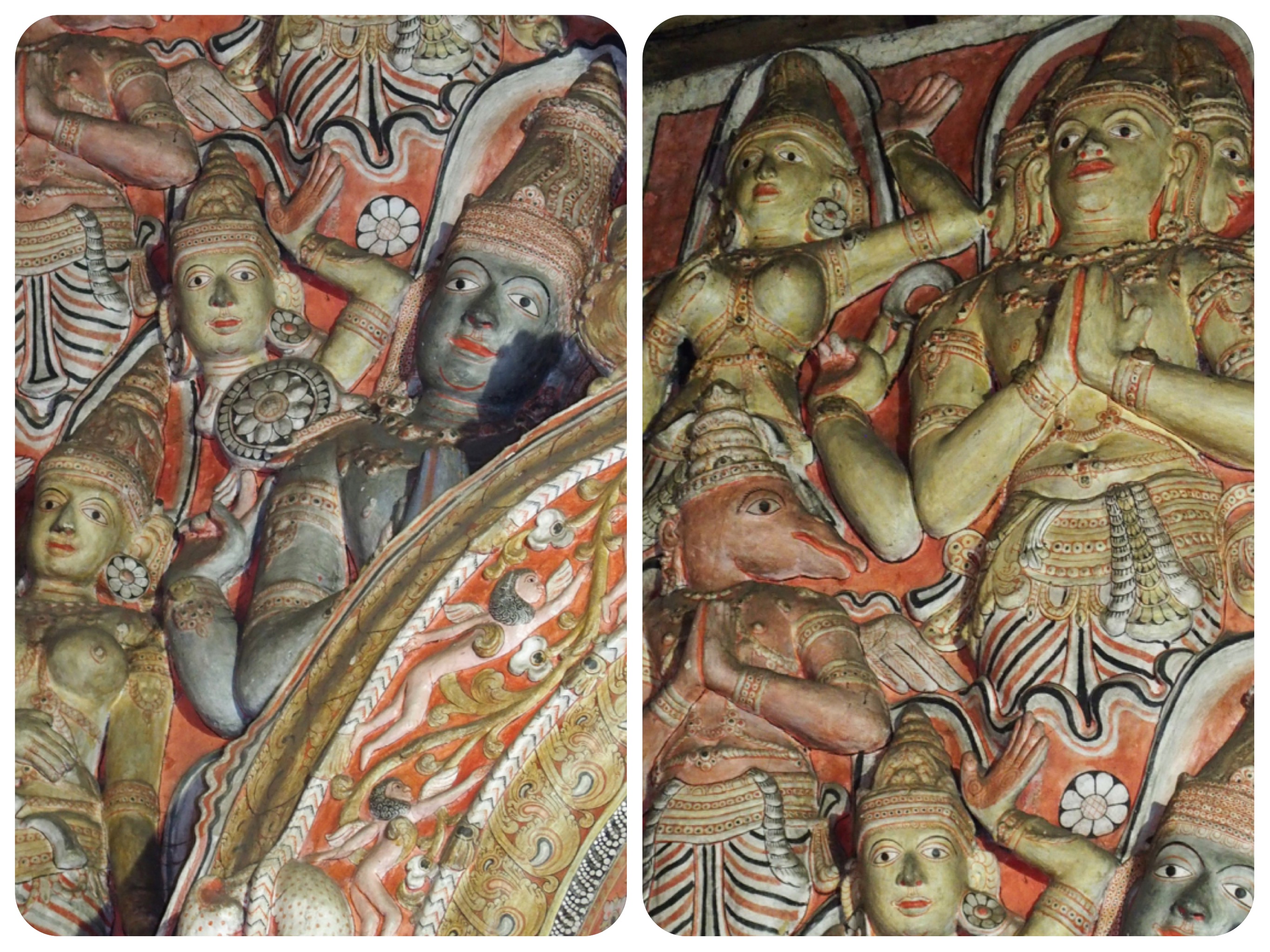
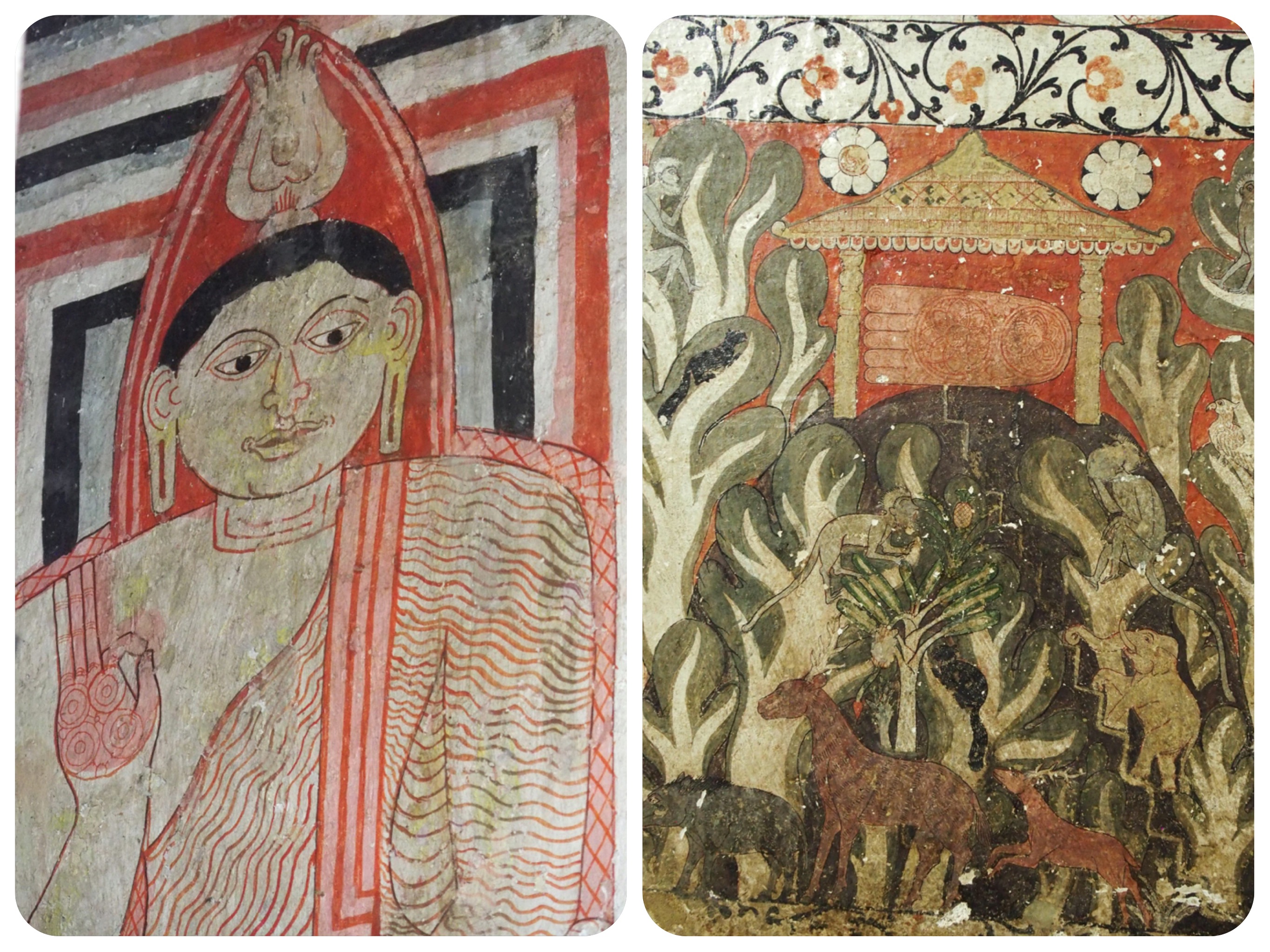
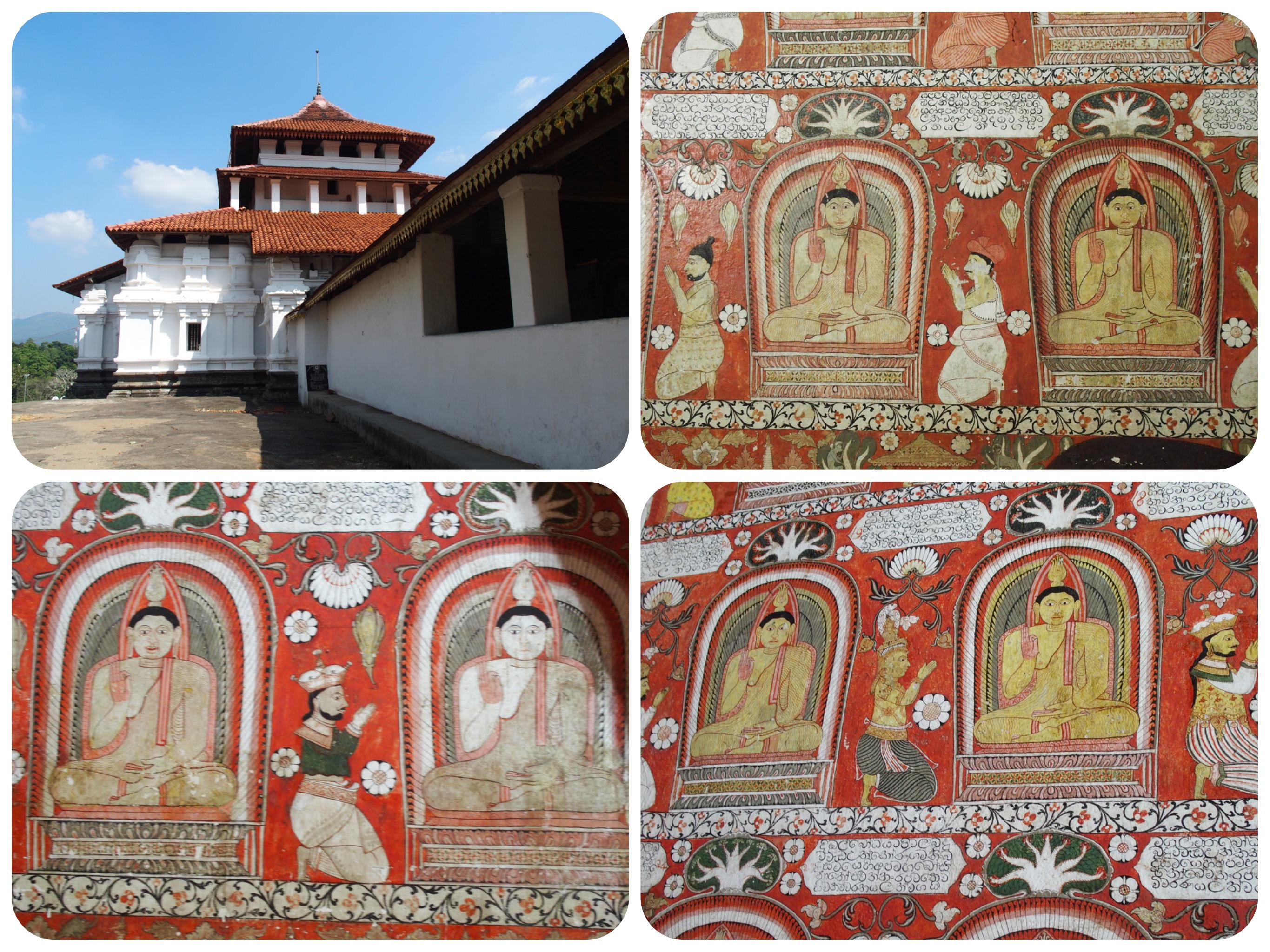
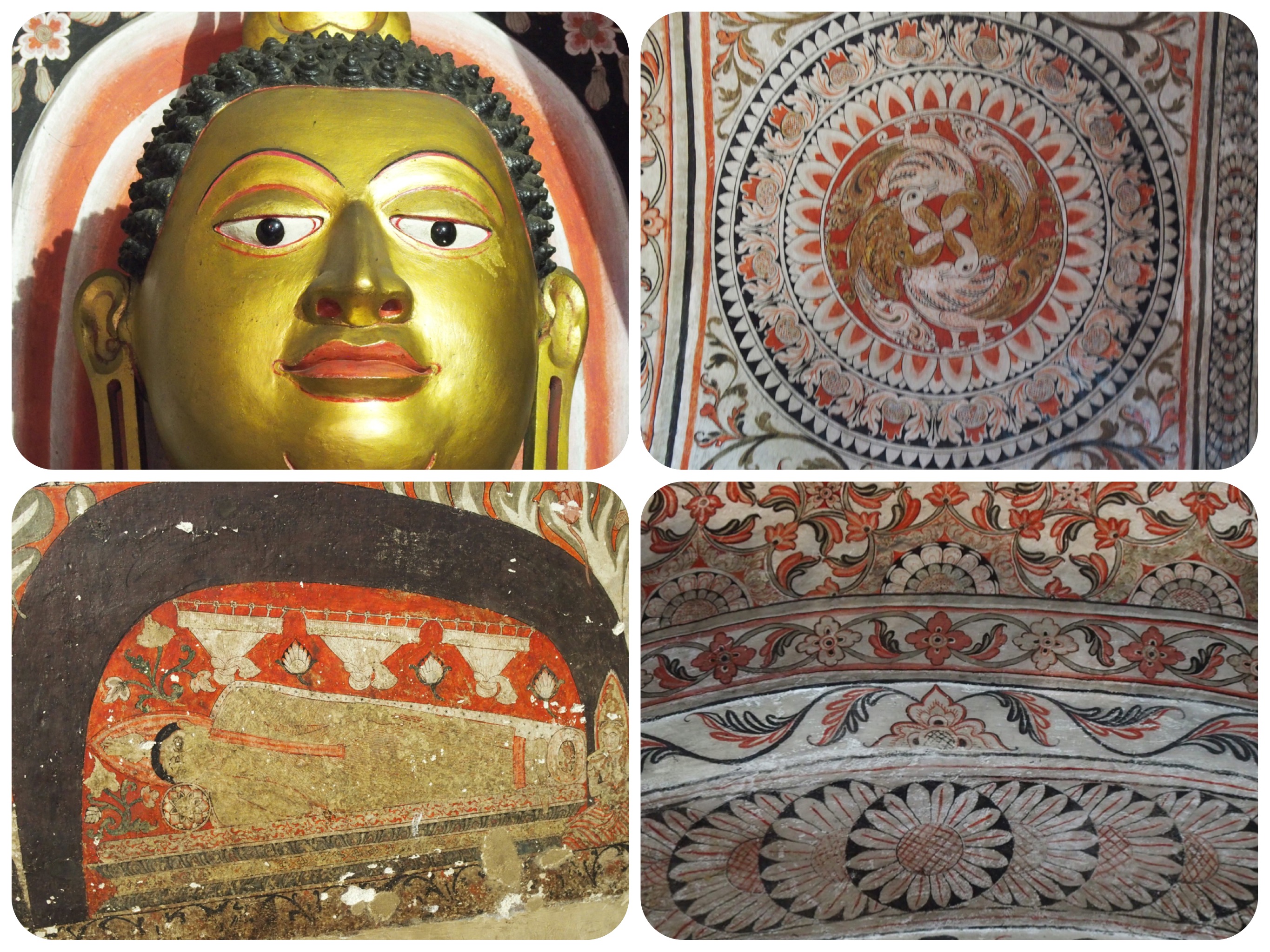
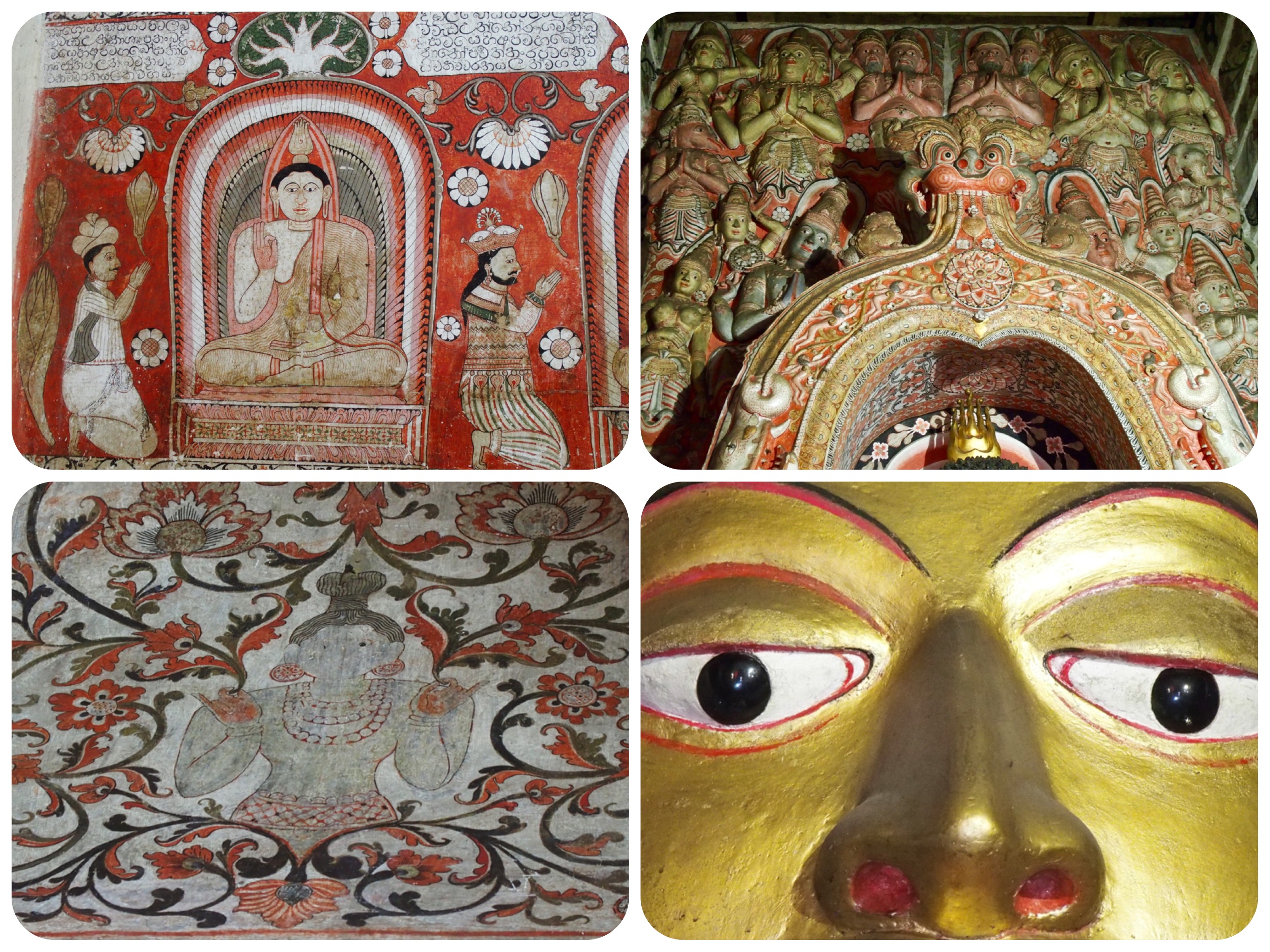
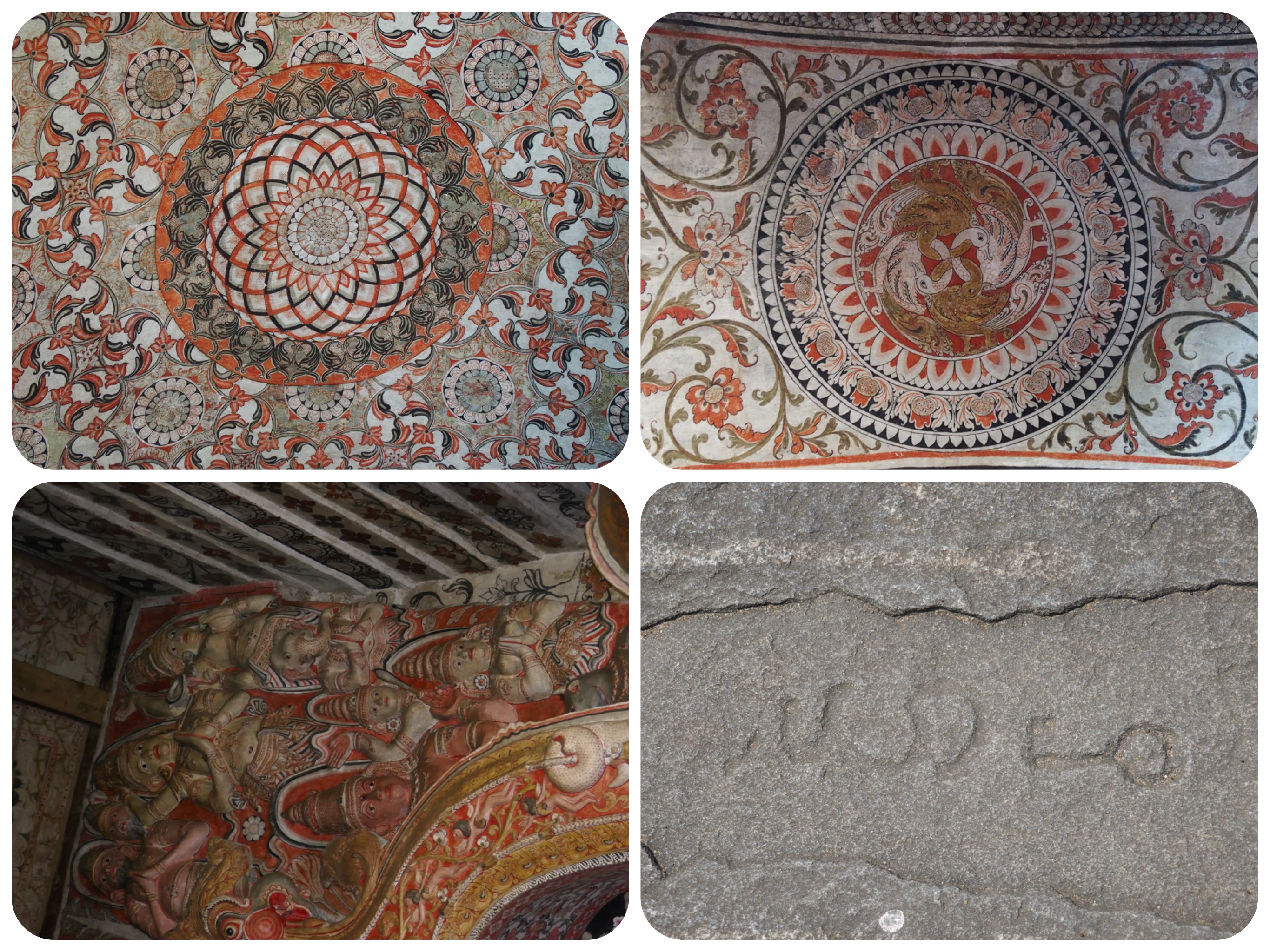
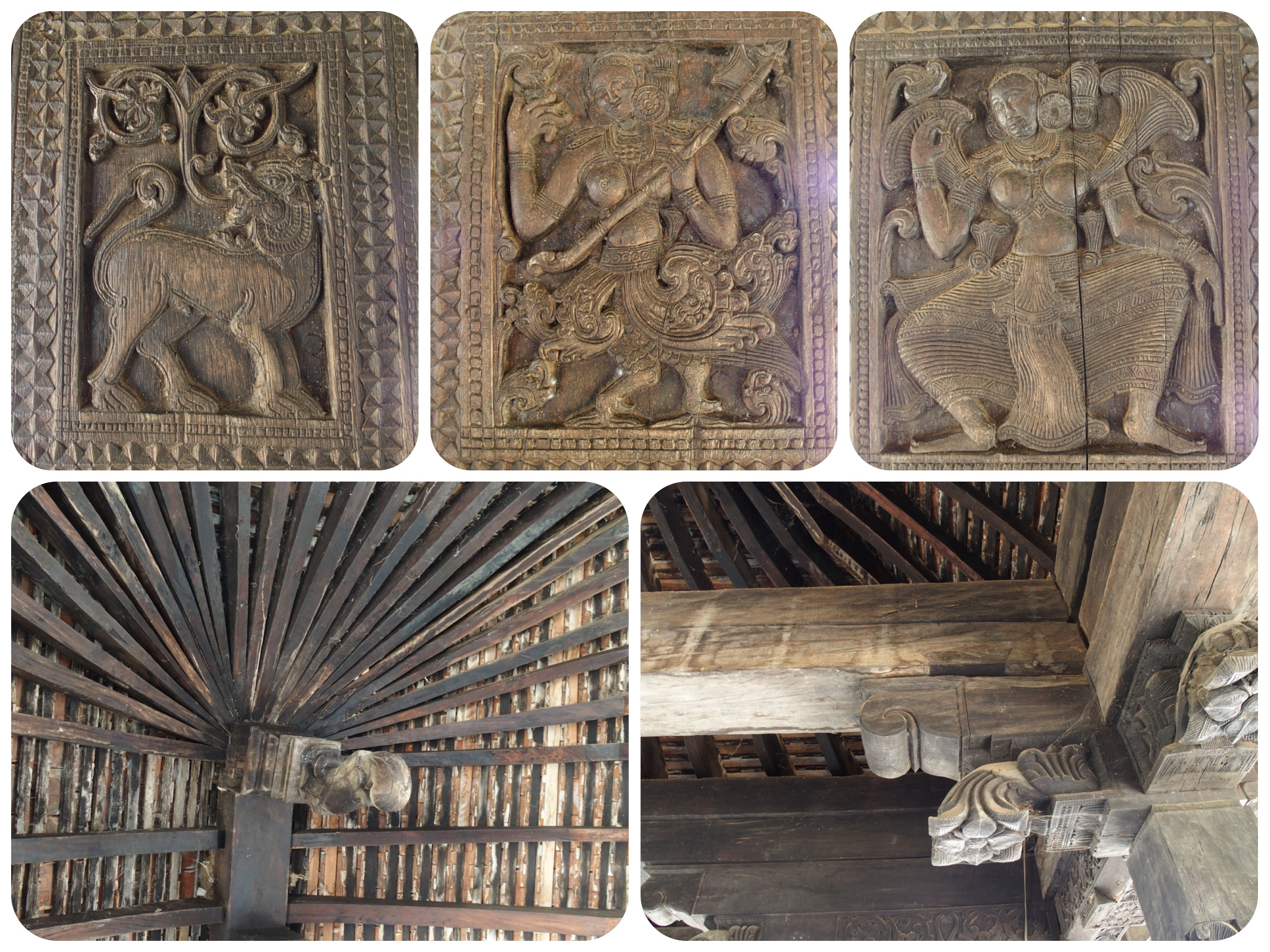
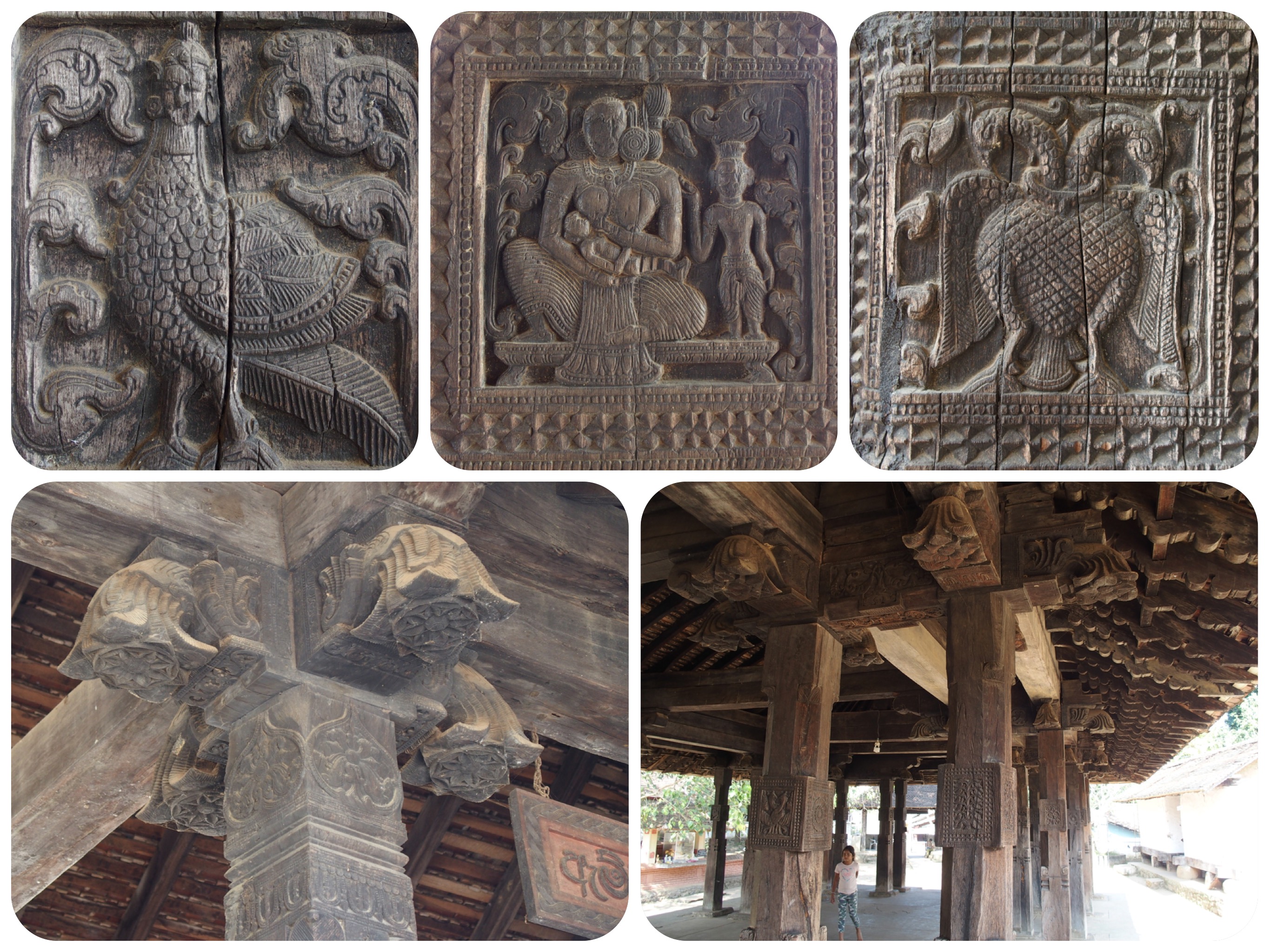
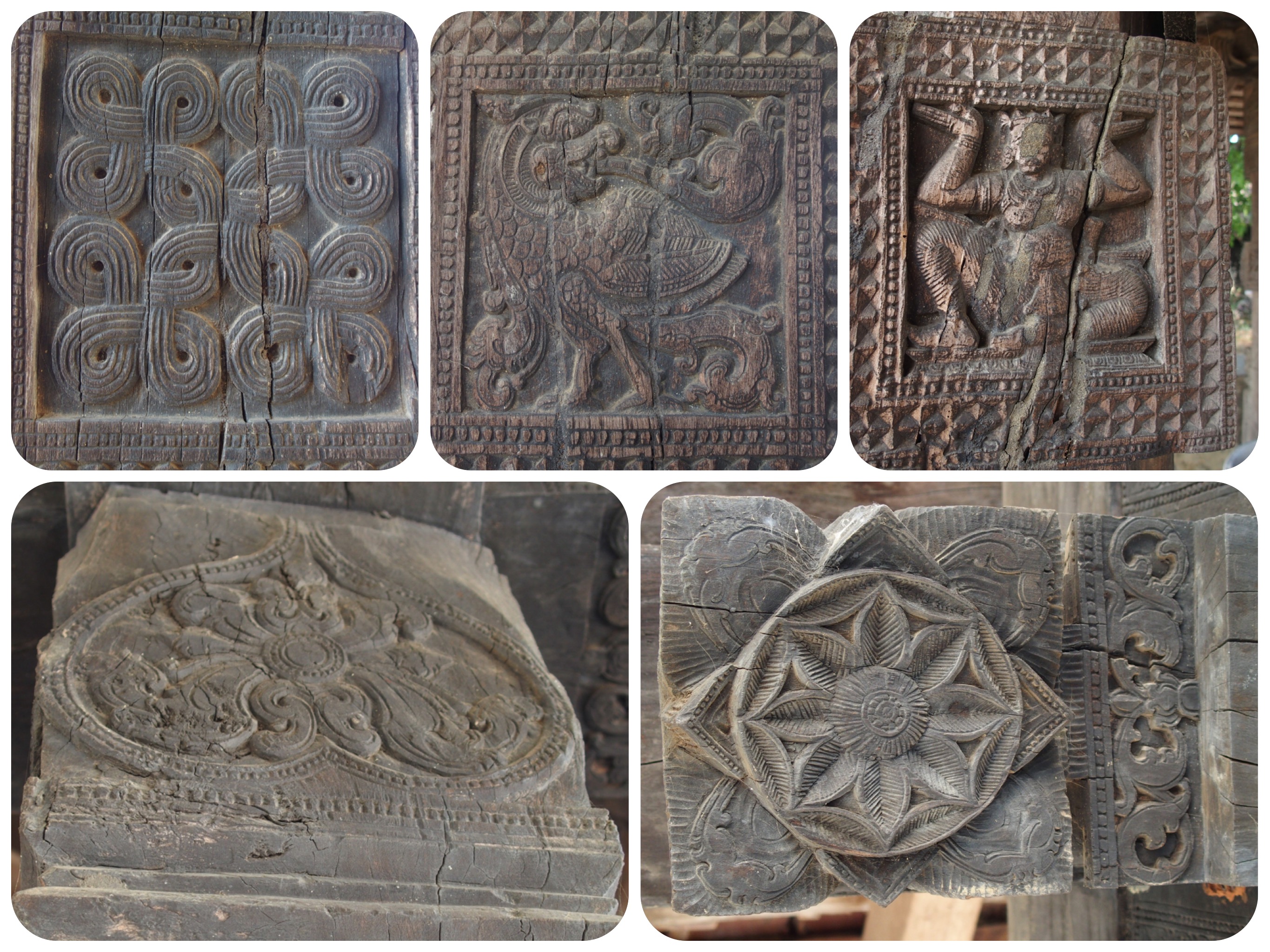
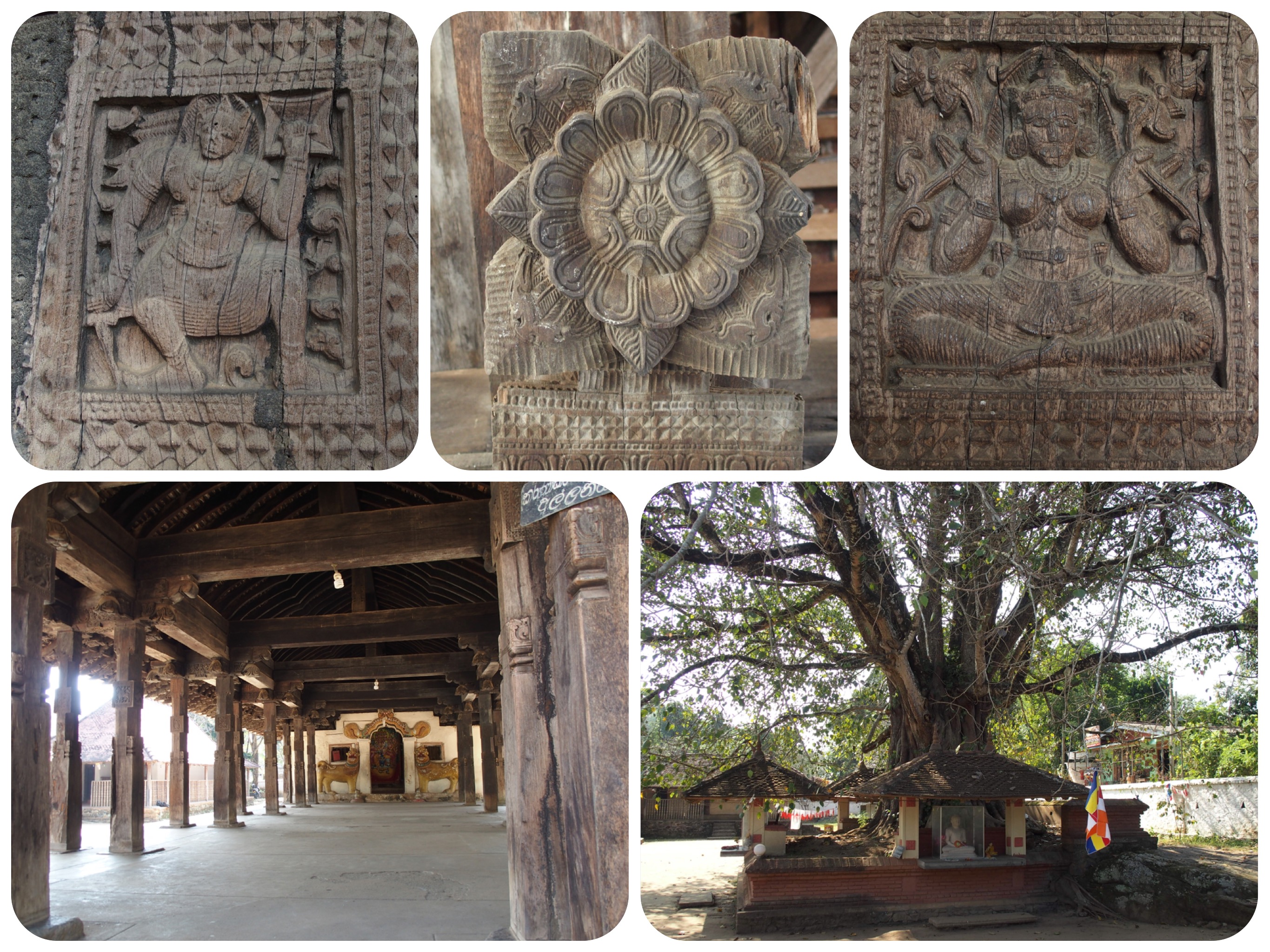
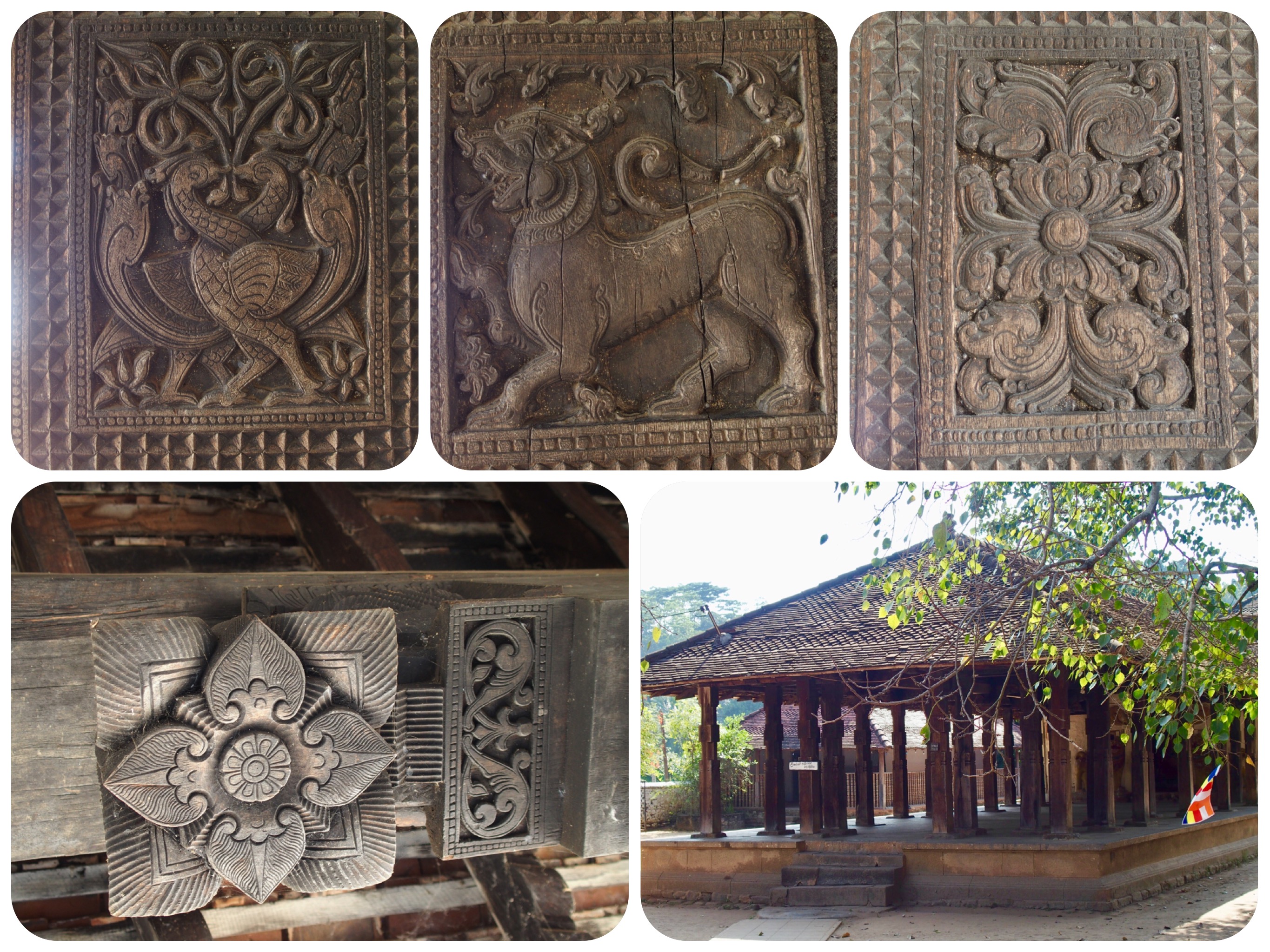
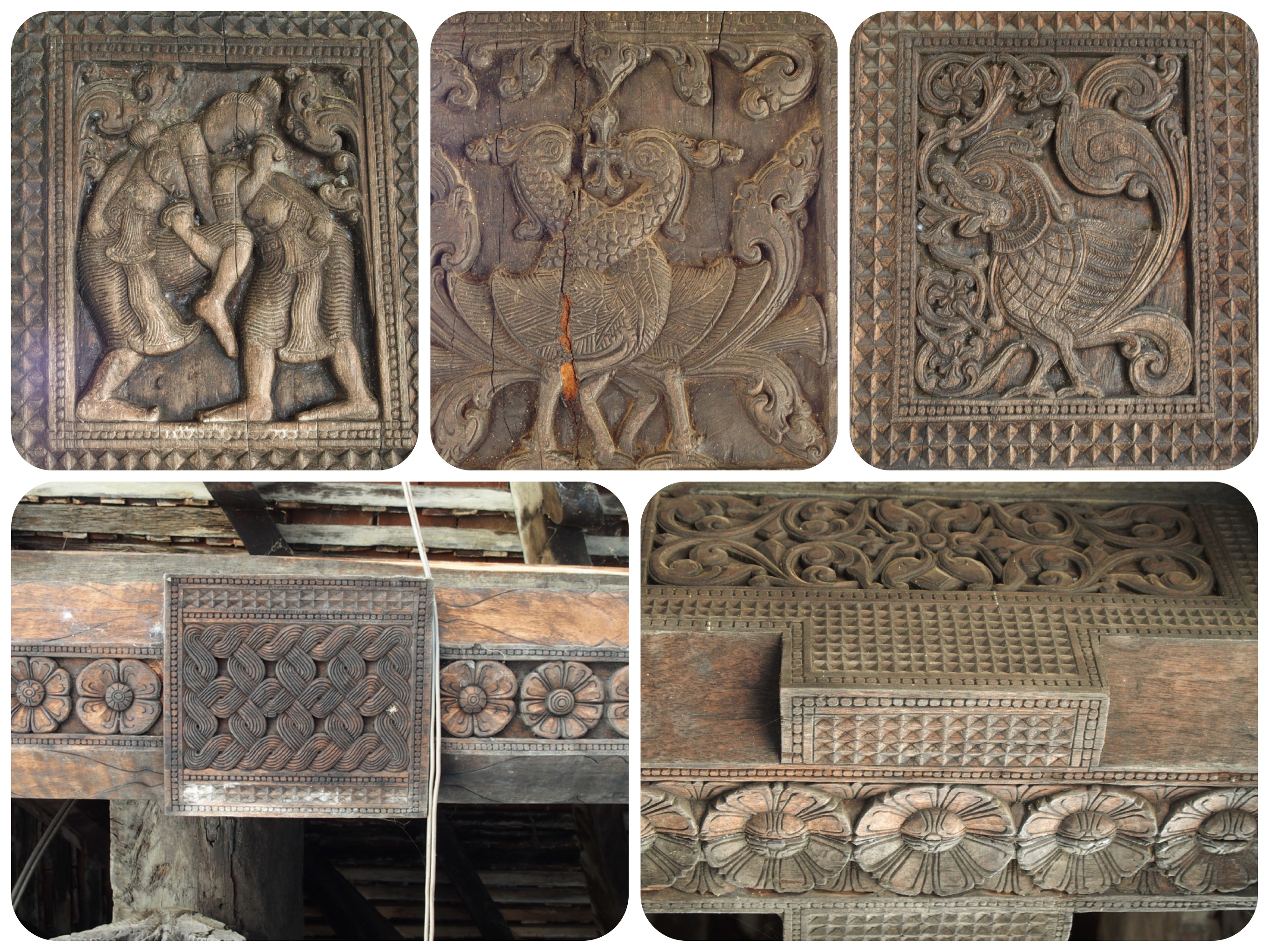
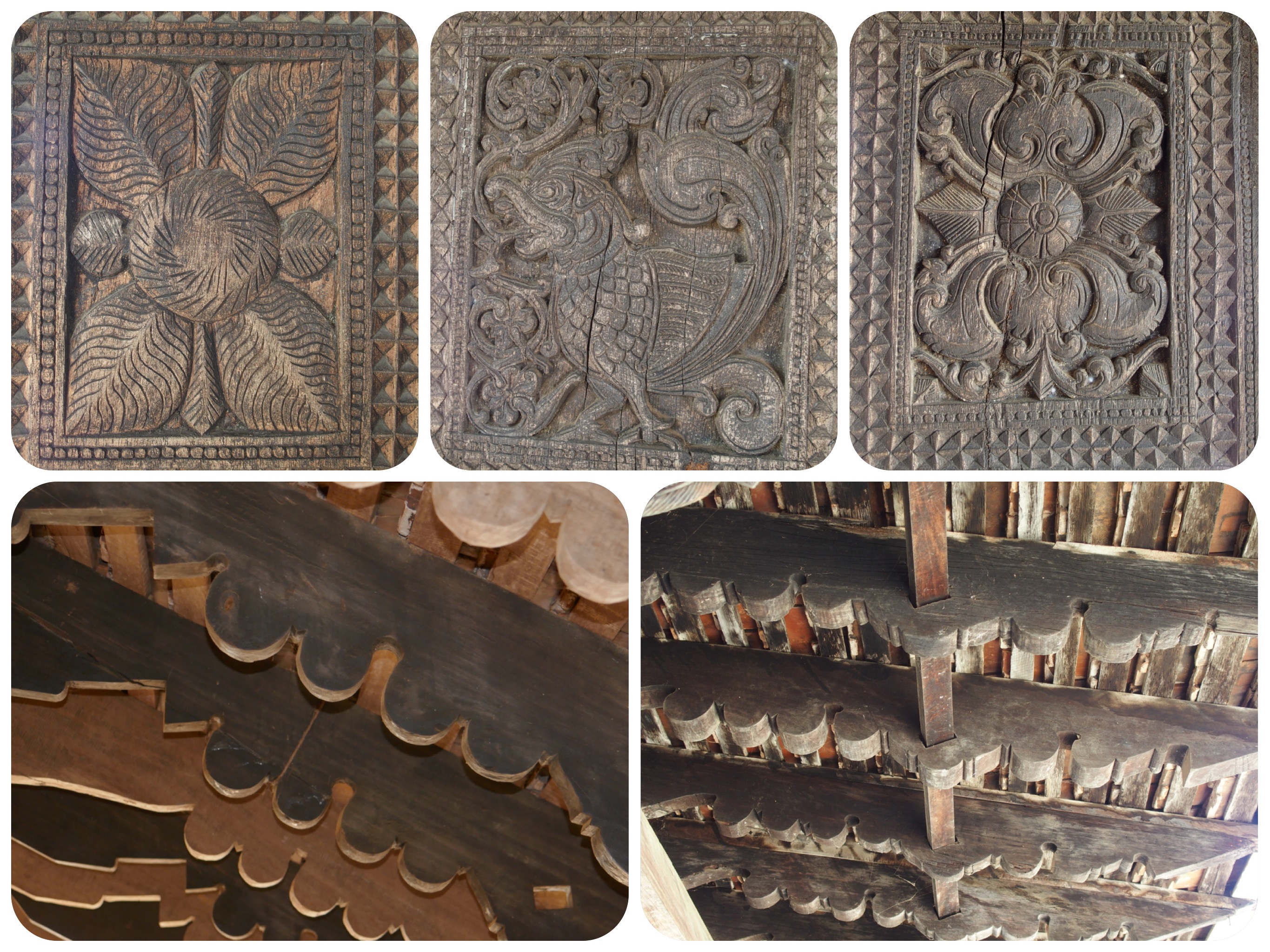
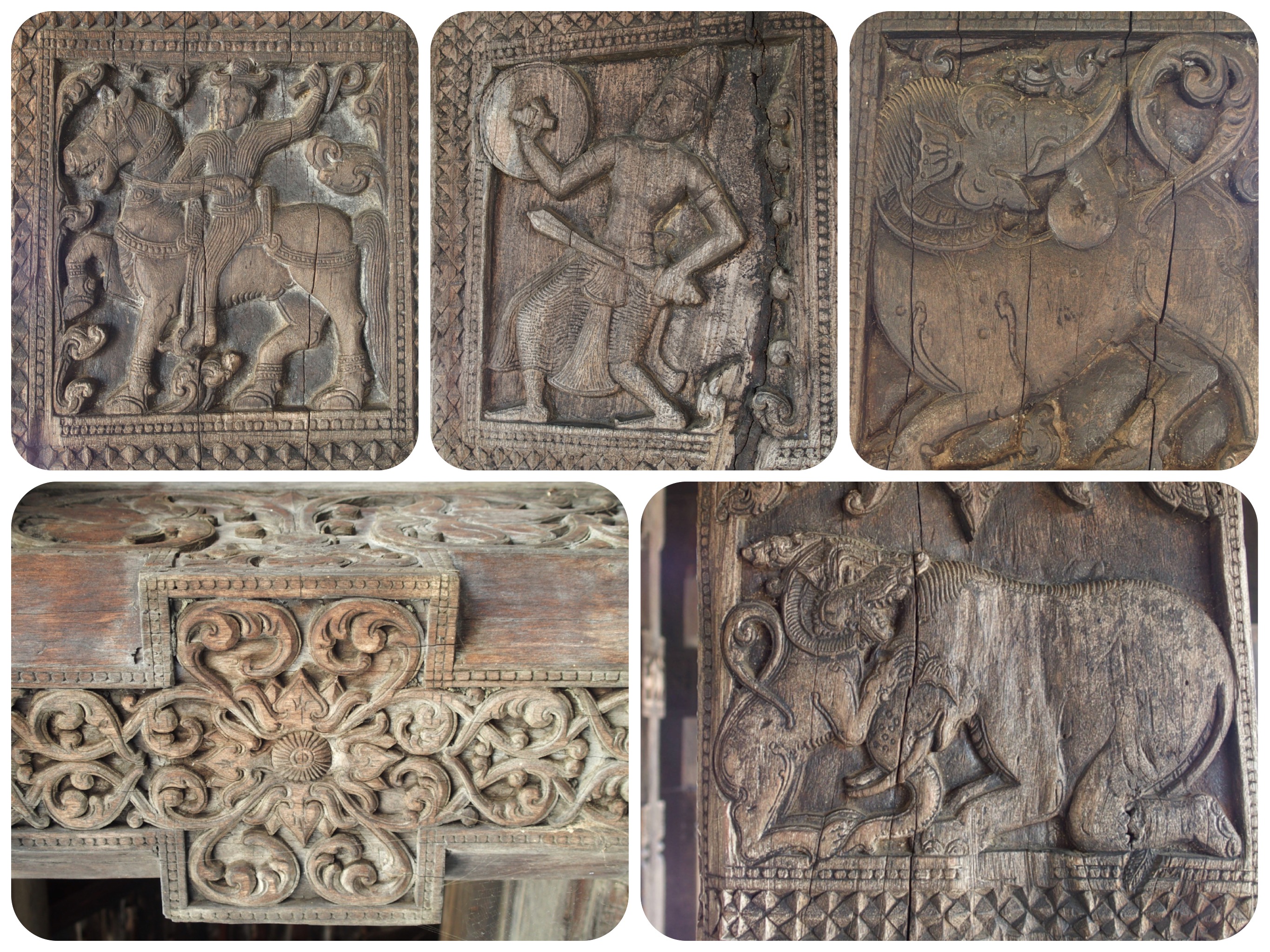
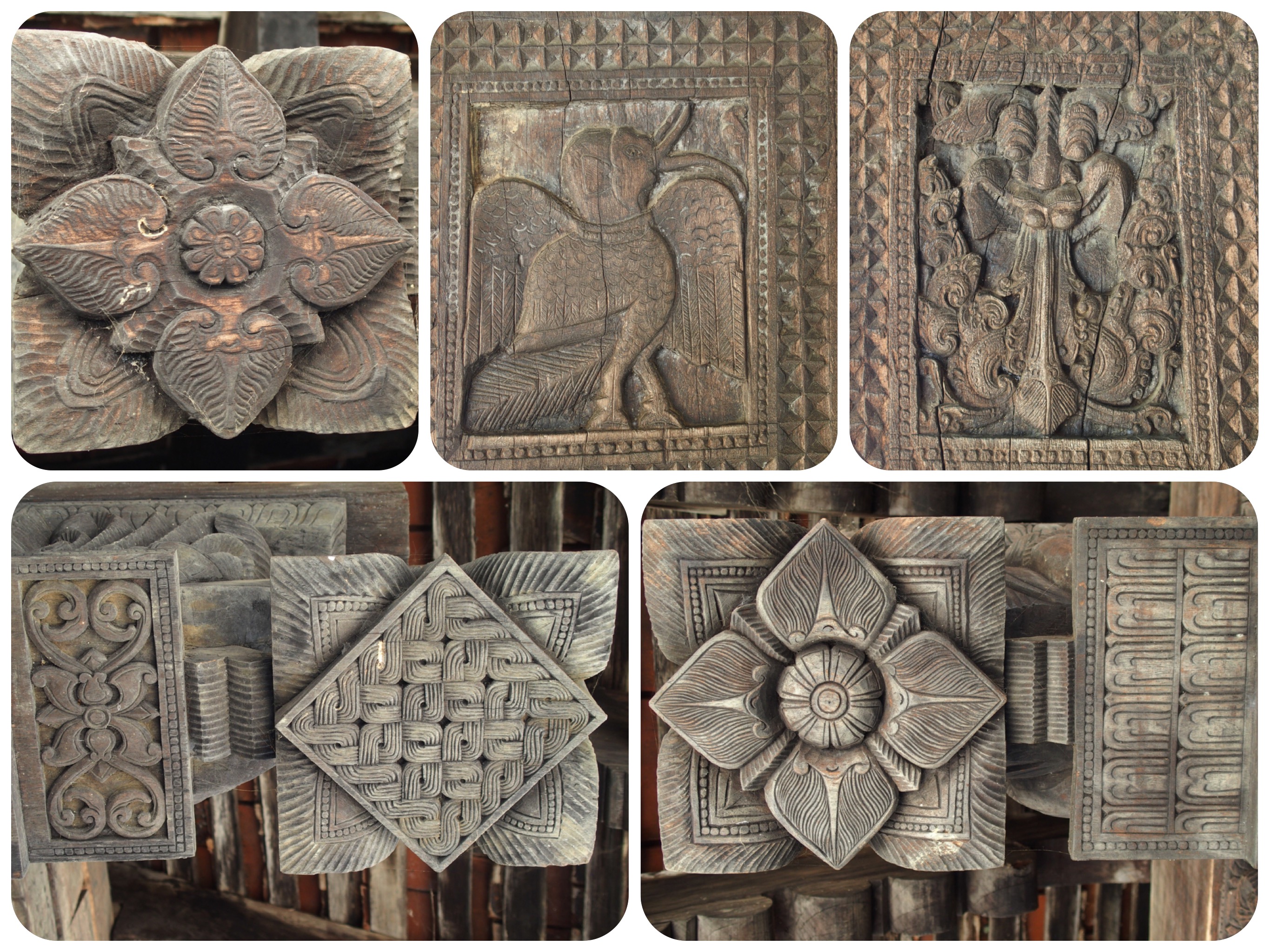
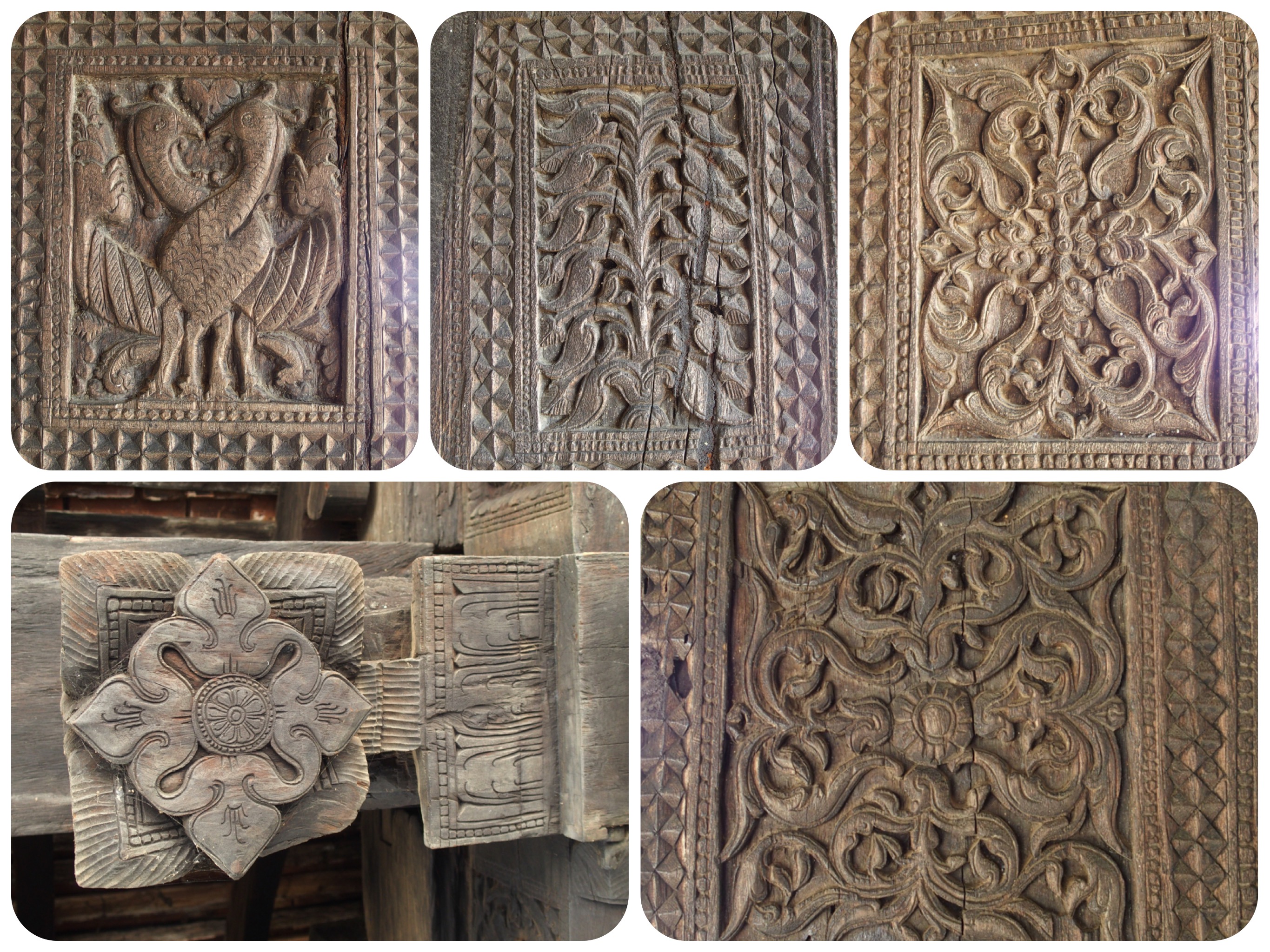
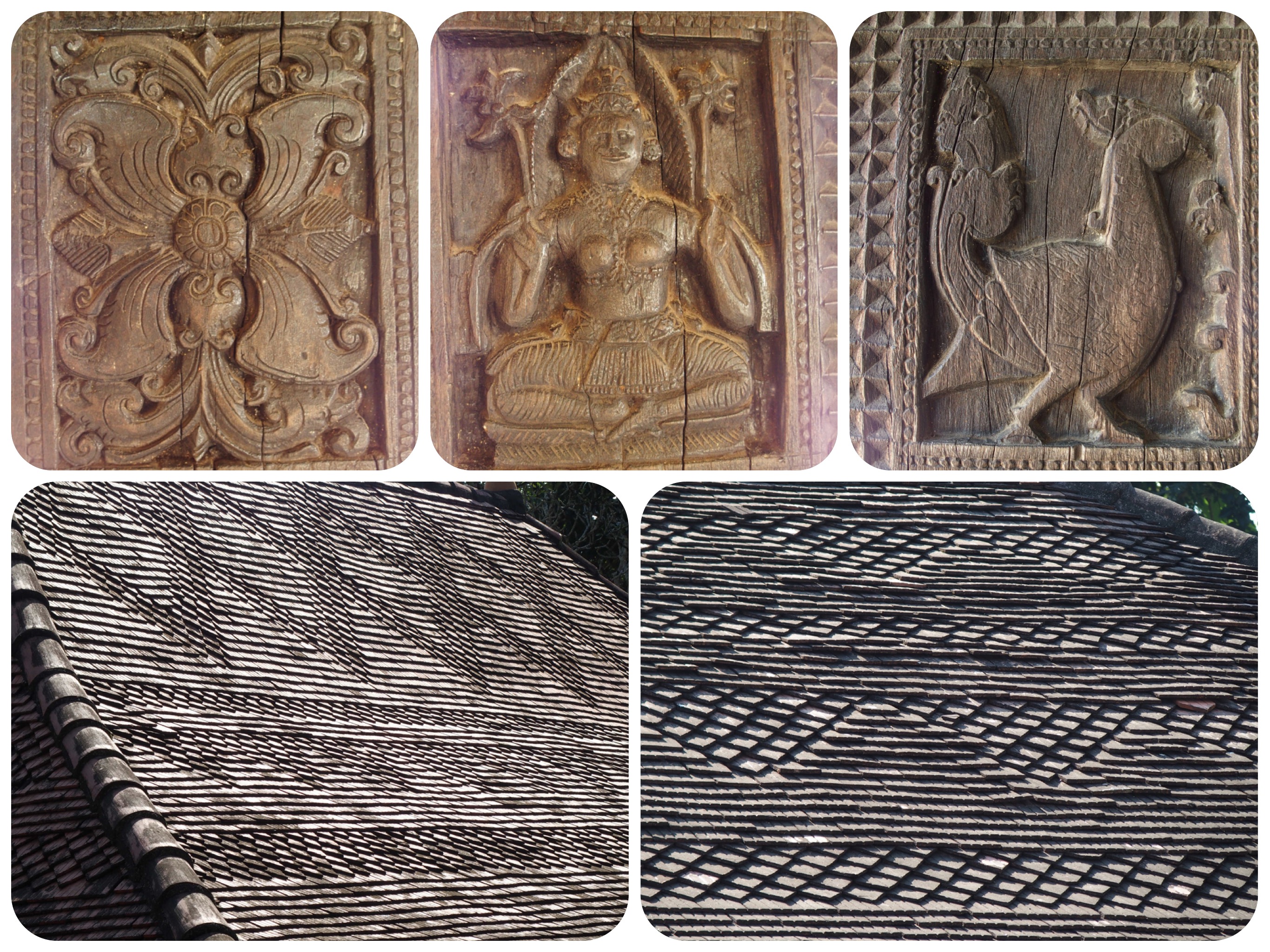
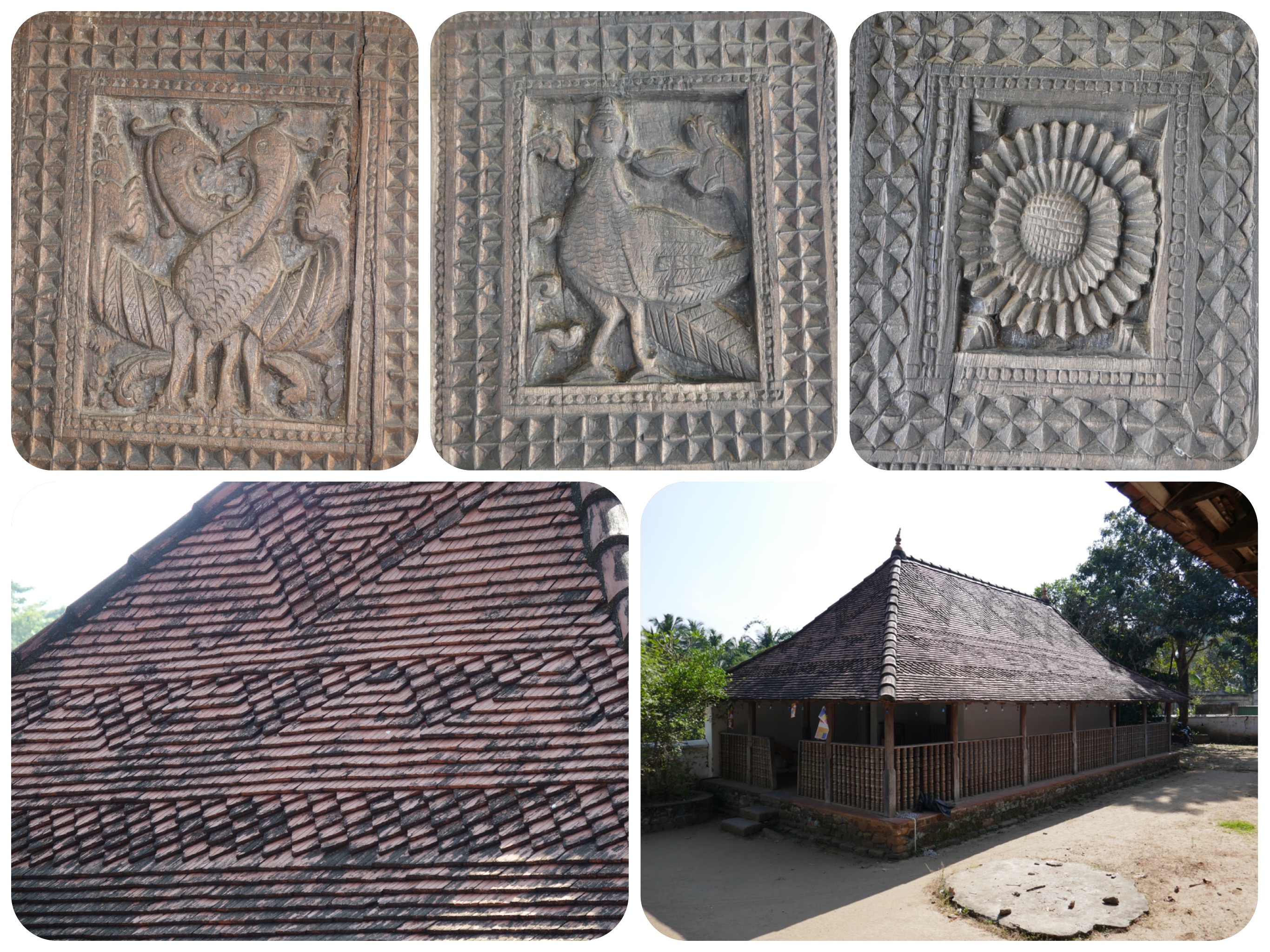
Gadaladeniya Temple, Lankatilaka Vihara Temple, and Embekka Devalaya Temple, in Kandy, Sri Lanka
There are quite a few ancient temples located in the hills surrounding the town of Kandy.
We only visited three of these ancient temples, although there are more to see if you have the time.
Gadaladeniya Vihara Temple is an old Buddhist rock temple situated in Pilimathalawa, in Kandy.
The temple was built in 1344 A.D., by King Bhuvanekabhu IV.
As with other Buddhist temples in Sri Lanka, there is great respect for existing Hindu temples and shrines, and often you can see Buddhist temple complexes with Hindu shrines inside, or Buddhist temples that were built using Hindu architectural influences.
This temple was designed using a Hindu artistic architectural style from South India, with elephants supporting the building, but with a Buddhist Stupa roof.
The whole temple was built on a large rock outcropping.
There are carved inscriptions on the rock, regarding the temple's construction.
There is also an old stupa on the rock, with four small image houses, one located at each of the cardinal directions.
Inside each of these Image Houses there is a seated Buddha, and the walls and ceilings still have remnants of the bright fresco paintings that once decorated them.
Celebrated scholarly monks once resided in this temple, but the temple was abandoned until the 1700’s.
The central temple is made of large granite slabs, and it is now undergoing exterior restoration.
Sometime in the 18th century, a multi-tiered tiled Sinhalese roof, resting on brick and wooden pillars, was added to the temple.
At the entrance to the main shrine room you will see an elaborately sculpted Dragon Arch, called Makara Thorana.
You can see this dragon arch at the entrance to most Buddhist shrines.
Sometimes it is just painted around the top of the door, at times there are crudely made sculptures, and in other shrines, as is the case with this temple, there are very detailed and very elaborate Makara Thorana Dragon arches.
Inside the shrine room, there is a seated Buddha with four standing Bodhisattva statues by its sides.
The Buddha’s hands always make some kind of “Mudra,” or hand gesture.
Mudras are symbolic, and they are well known and widely interpreted as to the underlying message they convey.
At times, the Mudras signal: “Fear Not!”
There are gestures that remind us to ward off negative and limiting thoughts, as well as gestures of greeting, prayer, peace, love, power and adoration.
In this temple, the Buddha is doing the 'Dhyana Mudra’ pose, the posture of meditation associated with his first enlightenment,
Adjacent to the main shrine room, there is a small Hindu shrine dedicated to Lord Vishnu.
It was originally dedicated to Varuna, the ancient God of the sky, justice and truth, who is mentioned in the oldest Vedic literature.
In some places he is mentioned as the god of the sea and the rain.
Varuna is possibly one of the earliest Indo-Aryan triads with parallels to the Iranian Ahura Mazda, and Varuna can also be found as Suiten in Japanese Buddhism and also in Jainism.
According to the early scriptures, Veruna’s streak of demonic, violent tendencies led Indra (The King of the Gods, the God of Lightning, Thunder, Rain and Rivers) to take away most of his powers.
During the passing years, Veruna was forgotten and Vishnu became more popular with devotees at this shrine.
There is also a shrine that is dedicated to Indra, the King of the gods and of Heaven.
Indra’s shrine, which was built as a main stupa with four smaller matching stupas, with the four cardinal individual shrine rooms, now houses statues of the seated Buddhas.
There is also a sacred Bodhi tree that, like all Bodhi trees around Sri Lanka, was grown from a cutting of the original Bodhi tree that was brought to Sri Lanka from India more than a thousand years ago, the very same ancient tree under which the Buddha achieved enlightenment.
From there, we went to visit Lankatilaka Vihara temple, located at Udunuwara Hiyarapitiya village, near Kandy.
When we arrived at the temple, it looked deserted.
There was a very large natural rocky platform, on which there are a few temples and a stupa, as well as a Bodhi tree.
We removed our hats and shoes and strolled around the drumming hall in front of the Hindu temple.
Soon a Hindu priest, dressed all in white and coughing loudly, arrived to open the shrine for us.
Behind the curtain wall, we entered an amazing temple, built by the same king, King Bhuvanekabhu IV, between the years 1341 to 1351 AD.
The inner temple was made of white marble, and it was encased inside a larger hall made of red bricks, with high arched ceilings.
As we walked inside this temple, I was amazed at the beauty of the architecture.
I was in sheer awe of how well it was designed and built.
There are a few shrines carved into the temple, and the Hindu priest opened the curtains so we could step up onto a wooden step, and peak inside at the Hindu Gods.
Because Lankatilaka Vihara is considered to be the most magnificent architectural edifice created during that era, it is today featured on the Sri Lankan 500 Rupee bank note.
After we finished touring the Hindu shrines and temple, to encourage the Hindu priest to continue our tour to the back section to open the impressive Buddhist temple in the back, we made a donation and also gave the coughing priest a personal donation.
He seemed extremely pleased.
He coughed some more, locked the temple and disappeared.
We continued walking barefoot on the rock to the back, where the Buddhist temple was located.
Soon a Buddhist man named Mahinda, showed up.
He was in charge of collecting entrance fees, and he opened the locked Buddhist temple’s door for us.
The main reason this temple is always locked, is because the huge Buddha seated inside the main shrine has real sapphire eyes.
The sapphires in the Buddha’s eyes are valued at several million dollars.
The temple itself was also designed and built with South Indian influences.
The building sits on a vast natural rock, and it was originally constructed as a four story temple, eighty feet high.
Today, only 3 stories can be seen.
The interior walls and ceilings of the image house have been adorned with Kandyan era paintings and sculptures.
As we entered through the opening in the wooden door, Mahinda asked us to lower our heads so as to avoid hitting the low opening.
Then he said:
“What is your country, Madame?
USA?
America?
Best country!
BEST country in the world!”
He then continued to explain about what we were seeing, the real sapphires in the Buddha’s eyes and other historical facts, using his sweet broken English.
After awhile, he got quiet and allowed us to take it all in, as well as to take many photos.
Then with renewed interest in his eyes, he asked me again:
“What is your country, Madame?
USA?
America?
Best country!
Best country!
BEST country in the world!”
We smiled sheepishly.
In the past few weeks when people heard we are Americans, the responses have been mixed.
Some just said:
“You are on vacation, so I will not upset you and ask about your new president...”
We always laughed, and we enjoyed it when they stretched their dark skinned forearms and said:
“Obama, we LOVE Obama.
Best American President EVER.
Same color as me!!!
Best president!”
Mahinda gave me his address, care of Lankatilaka temple, and said he would love it if I ever wanted to write to him.
Maybe I will... just to make him happy.
Embekka Temple was a short ride from there.
It was built by Vikramabahu III in 1357 - 1374 AD.
The devalaya is dedicated to the worship of Kataragama Deviy, a guardian deity of Sri Lanka.
The temple consists of a few buildings: the Kataragama Deviy shrine, a small Buddhist shrine, the main Dancing and Drummers Hall, which is constructed entirely of stunningly carved wooden beams and posts, as well as a few traditional farm houses.
The large "Dancing Hall,” or the "Drummers' Hall,” is entirely without walls.
The ceiling beams are carved and inserted into the rafters, holding the roof in place in a most creative way.
The Drummers' Hall carvings are truly splendid, with ornate pillars and a high pitched roof supported with lotus flowers at the beam and post joins.
It is said that some of the wood utilized in the "Drummers' Hall" came from an abandoned Royal Audience Hall.
The carvings, which are one of a kind and different on each side of the many square posts and beams, are said to be some the the best examples of Sinhalese art.
From the land of beauty and soul, I bid you good night...
Tali